- Our Writers
- How to Order
- Assignment Writing Service
- Report Writing Service
- Buy Coursework
- Dissertation Writing Service
- Research Paper Writing Service
- All Essay Services
- Buy Research Paper
- Buy Term Paper
- Buy Dissertation
- Buy Case study
- Buy Presentation
- Buy Personal statement
Research Paper Guide
Types Of Qualitative Research

8 Types of Qualitative Research - Overview & Examples
16 min read
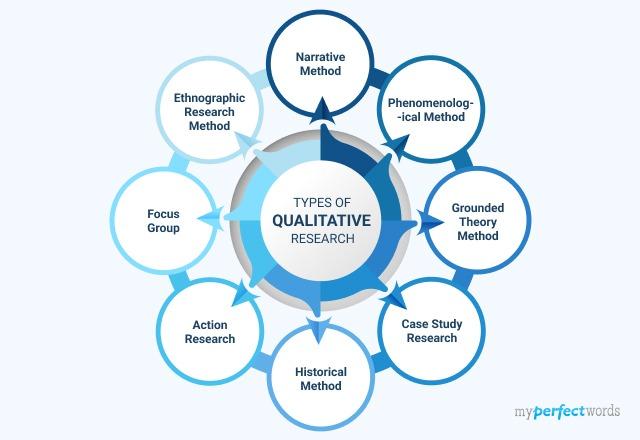
People also read
Research Paper Writing - A Step by Step Guide
Research Paper Examples - Free Sample Papers for Different Formats!
Guide to Creating Effective Research Paper Outline
Interesting Research Paper Topics for 2024
Research Proposal Writing - A Step-by-Step Guide
How to Start a Research Paper - 7 Easy Steps
How to Write an Abstract for a Research Paper - A Step by Step Guide
Writing a Literature Review For a Research Paper - A Comprehensive Guide
Qualitative Research - Methods, Types, and Examples
Qualitative vs Quantitative Research - Learning the Basics
200+ Engaging Psychology Research Paper Topics for Students in 2024
Learn How to Write a Hypothesis in a Research Paper: Examples and Tips!
20+ Types of Research With Examples - A Detailed Guide
Understanding Quantitative Research - Types & Data Collection Techniques
230+ Sociology Research Topics & Ideas for Students
How to Cite a Research Paper - A Complete Guide
Excellent History Research Paper Topics- 300+ Ideas
A Guide on Writing the Method Section of a Research Paper - Examples & Tips
How To Write an Introduction Paragraph For a Research Paper: Learn with Examples
Crafting a Winning Research Paper Title: A Complete Guide
Writing a Research Paper Conclusion - Step-by-Step Guide
Writing a Thesis For a Research Paper - A Comprehensive Guide
How To Write A Discussion For A Research Paper | Examples & Tips
How To Write The Results Section of A Research Paper | Steps & Examples
Writing a Problem Statement for a Research Paper - A Comprehensive Guide
Finding Sources For a Research Paper: A Complete Guide
A Guide on How to Edit a Research Paper
200+ Ethical Research Paper Topics to Begin With (2024)
300+ Controversial Research Paper Topics & Ideas - 2024 Edition
150+ Argumentative Research Paper Topics For You - 2024
How to Write a Research Methodology for a Research Paper
Are you overwhelmed by the multitude of qualitative research methods available? It's no secret that choosing the right approach can leave you stuck at the starting line of your research.
Selecting an unsuitable method can lead to wasted time, resources, and potentially skewed results. But with so many options to consider, it's easy to feel lost in the complexities of qualitative research.
In this comprehensive guide, we will explain the types of qualitative research, their unique characteristics, advantages, and best use cases for each method.
Let's dive in!

Paper Due? Why Suffer? That's our Job!
- 1. What is Qualitative Research?
- 2. Types of Qualitative Research Methods
- 3. Types of Data Analysis in Qualitative Research
What is Qualitative Research?
Qualitative research is a robust and flexible methodology used to explore and understand complex phenomena in-depth.
Unlike quantitative research , qualitative research dives into the rich and complex aspects of human experiences, behaviors, and perceptions.
At its core, this type of research question seek to answer for:
- Why do people think or behave a certain way?
- What are the underlying motivations and meanings behind actions?
- How do individuals perceive and interpret the world around them?
This approach values context, diversity, and the unique perspectives of participants.
Rather than seeking generalizable findings applicable to a broad population, qualitative research aims for detailed insights, patterns, and themes that come from the people being studied.
Characteristics of Qualitative Research
Qualitative research possesses the following characteristics:
- Subjective Perspective: Qualitative research explores subjective experiences, emphasizing the uniqueness of human behavior and opinions.
- In-Depth Exploration: It involves deep investigation, allowing a comprehensive understanding of specific phenomena.
- Open-Ended Questions: Qualitative research uses open-ended questions to encourage detailed, descriptive responses.
- Contextual Understanding: It emphasizes the importance of understanding the research context and setting.
- Rich Descriptions: Qualitative research produces rich, descriptive findings that contribute to a nuanced understanding of the topic.
Types of Qualitative Research Methods
Researchers collect data on the targeted population, place, or event by using different types of qualitative research analysis.
Each qualitative research method offers a distinct perspective, enabling researchers to reveal concealed meanings, patterns, and valuable insights.
Below are the most commonly used qualitative research types for writing a paper.
Ethnographic Research Method
Ethnography, a subfield of anthropology, provides a scientific approach to examining human societies and cultures. It ranks among the most widely employed qualitative research techniques.
In ethnographic field notes, researchers actively engage with the environment and live alongside the focus group.
This immersive interaction allows researchers to gain insights into the objectives, motivations, challenges, and distinctive cultural attributes of the individuals under study.
Key cultural characteristics that ethnography helps to illustrate encompass:
- Geographical Location
- Religious Practices
- Tribal Systems
- Shared Experiences
Unlike traditional survey and interview-based research methods, ethnographers don't rely on structured questioning.
Instead, they become observers within the community, emphasizing participant observation over an extended period. However, it may also be appropriate to complement observations with interviews of individuals who possess knowledge of the culture.
Ethnographic research can present challenges if the researcher is unfamiliar with the social norms and language of the group being studied.
Furthermore, interpretations made by outsiders may lead to misinterpretations or confusion. Therefore, thorough validation of data is essential before presenting findings.
Narrative Method
The narrative research design unfolds over an extended period to compile data, much like crafting a cohesive story. Similar to a narrative structure, it begins with a starting point and progresses through various life situations.
In this method, researchers engage in in-depth interviews and review relevant documents. They explore events that have had a significant impact on an individual's personality and life journey. Interviews may occur over weeks, months, or even years, depending on the depth and scope of the narrative being studied.
The outcome of narrative research is the presentation of a concise story that captures essential themes, conflicts, and challenges. It provides a holistic view of the individual's experiences, both positive and negative, which have shaped their unique narrative.
Phenomenological Method
The term "phenomenological" pertains to the study of phenomena, which can encompass events, situations, or experiences.
This method is ideal for examining a subject from multiple perspectives and contributing to existing knowledge, with a particular focus on subjective experiences.
Researchers employing the phenomenological method use various data collection techniques, including interviews, site visits, observations, surveys, and document reviews.
These methods help gather rich and diverse data about the phenomenon under investigation.
A central aspect of this technique is capturing how participants experience events or activities, delving into their subjective viewpoints. Ultimately, the research results in the creation of a thematic database that validates the findings and offers insights from the subject's perspective.
Grounded Theory Method
A grounded theory approach differs from a phenomenological study in that it seeks to explain, provide reasons for, or develop theories behind an event or phenomenon.
It serves as a means to construct new theories by systematically collecting and analyzing data related to a specific phenomenon.
Researchers employing the grounded theory method utilize a variety of data collection techniques, including observation, interviews, literature review , and the analysis of relevant documents.
The focus of content analysis is not individual behaviors but a specific phenomenon or incident.
This method typically involves various coding techniques and large sample sizes to identify themes and develop more comprehensive theories.
Case Study Research
The case study approach entails a comprehensive examination of a subject over an extended period, with a focus on providing detailed insights into the subject, which can be an event, person, business, or place.
Data for case studies is collected from diverse sources, including interviews, direct observation, historical records, and documentation.
Case studies find applications across various disciplines, including law, education, medicine, and the sciences. They can serve both descriptive and explanatory purposes, making them a versatile research methodology .
Researchers often turn to the case study method when they want to explore:
- 'How' and 'why' research questions
- Behaviors under observation
- Understanding a specific phenomenon
- The contextual factors influencing the phenomena
Historical Method
The historical method aims to describe and analyze past events, offering insights into present patterns and the potential to predict future scenarios.
Researchers formulate research questions based on a hypothetical idea and then rigorously test this idea using multiple historical resources.
Key steps in the historical method include:
- Developing a research idea
- Identifying appropriate sources such as archives and libraries
- Ensuring the reliability and validity of these sources
- Creating a well-organized research outline
- Systematically collecting research data
The analysis phase involves critically assessing the collected data, accepting or rejecting it based on credibility, and identifying any conflicting evidence.
Ultimately, the outcomes of the historical method are presented in the form of a biography or a scholarly paper that provides a comprehensive account of the research findings.
Action Research
Action research is a dynamic research approach focused on addressing practical challenges in real-world settings while simultaneously conducting research to improve the situation.
It follows a cyclic process, starting with the identification of a specific issue or problem in a particular context.
The key steps in action research include:
- Planning and implementing actions to address the issue
- Collecting data during the action phase to understand its impact
- Reflecting on the data and analyzing it to gain insights
- Adjusting the action plan based on the analysis
This process may be iterative, with multiple cycles of action and reflection.
The outcomes of action research are practical solutions and improved practices that directly benefit the context in which the research is conducted. Additionally, it leads to a deeper and more nuanced understanding of the issue under investigation.
Focus Groups
Focus groups are a qualitative research method used to gather in-depth insights and perspectives on a specific topic or research question.
This approach involves assembling a small group of participants who possess relevant knowledge or experiences related to the research focus.
Key steps in the focus group method include:
- Selecting participants
- Moderating the discussion
- Structuring the conversation around open-ended questions
- Collecting data through audio or video recordings and note-taking
The discussion is dynamic and interactive, encouraging participants to share their thoughts, experiences, and opinions.
The analysis phase involves reviewing the data collected from the focus group discussion to identify common themes, patterns, and valuable insights. Focus groups provide rich qualitative data that offer a deeper and more nuanced understanding of the research topic or question.
Tough Essay Due? Hire Tough Writers!
Types of Data Analysis in Qualitative Research
Qualitative research employs different data analysis methods, each suited to specific research goals:
- Thematic Analysis: Identifies recurring themes or concepts within data.
- Content Analysis: Systematically categorizes and quantifies text or media content.
- Narrative Analysis: Focuses on storytelling and narrative elements in data.
- Grounded Theory Analysis: Develops or refines theories based on data.
- Discourse Analysis: Examines language and communication patterns.
- Framework Analysis: Organizes data using predefined categories.
- Visual Analysis: Interprets visual data like photos or videos.
- Cross-case Analysis: Compares patterns across multiple cases.
The choice depends on research questions and data type, enhancing understanding and insights.
Benefits of Qualitative Research
Qualitative research offers valuable advantages, including:
- Flexibility: Adaptable to various research questions and settings.
- Holistic Approach: Explores multiple dimensions of phenomena.
- Theory Development: Contributes to theory creation or refinement.
- Participant Engagement: Fosters active participant involvement.
- Complements Quantitative Research: Provides a comprehensive understanding.
All in all, different types of qualitative research methodology can assist in understanding the behavior and motivations of people. Similarly, it will also help in generating original ideas and formulating a better research problem.
However, not everyone can write a good research paper. Thus, if you get stuck at any stage, you can get professional help.
MyPerfectWords.com is the best paper writing service, where you can hire a professional writer for all your ' do my essay ' requests.
We assure you that you will receive high-quality paper at the most reasonable rates.
Contact our team with your " pay for my research paper " queries. We are available 24/7!

Write Essay Within 60 Seconds!

Nova Allison is a Digital Content Strategist with over eight years of experience. Nova has also worked as a technical and scientific writer. She is majorly involved in developing and reviewing online content plans that engage and resonate with audiences. Nova has a passion for writing that engages and informs her readers.

Paper Due? Why Suffer? That’s our Job!
Keep reading

- Skip to main content
- Skip to primary sidebar
- Skip to footer
- QuestionPro

- Solutions Industries Gaming Automotive Sports and events Education Government Travel & Hospitality Financial Services Healthcare Cannabis Technology Use Case NPS+ Communities Audience Contactless surveys Mobile LivePolls Member Experience GDPR Positive People Science 360 Feedback Surveys
- Resources Blog eBooks Survey Templates Case Studies Training Help center
Home Market Research
Qualitative Research Methods: Types, Analysis + Examples

Qualitative research is based on the disciplines of social sciences like psychology, sociology, and anthropology. Therefore, the qualitative research methods allow for in-depth and further probing and questioning of respondents based on their responses. The interviewer/researcher also tries to understand their motivation and feelings. Understanding how your audience makes decisions can help derive conclusions in market research.
What is qualitative research?
Qualitative research is defined as a market research method that focuses on obtaining data through open-ended and conversational communication .
This method is about “what” people think and “why” they think so. For example, consider a convenience store looking to improve its patronage. A systematic observation concludes that more men are visiting this store. One good method to determine why women were not visiting the store is conducting an in-depth interview method with potential customers.
For example, after successfully interviewing female customers and visiting nearby stores and malls, the researchers selected participants through random sampling . As a result, it was discovered that the store didn’t have enough items for women.
So fewer women were visiting the store, which was understood only by personally interacting with them and understanding why they didn’t visit the store because there were more male products than female ones.
Gather research insights
Types of qualitative research methods with examples
Qualitative research methods are designed in a manner that helps reveal the behavior and perception of a target audience with reference to a particular topic. There are different types of qualitative research methods, such as in-depth interviews, focus groups, ethnographic research, content analysis, and case study research that are usually used.
The results of qualitative methods are more descriptive, and the inferences can be drawn quite easily from the obtained data .
Qualitative research methods originated in the social and behavioral research sciences. Today, our world is more complicated, and it is difficult to understand what people think and perceive. Online research methods make it easier to understand that as it is a more communicative and descriptive analysis .
The following are the qualitative research methods that are frequently used. Also, read about qualitative research examples :

1. One-on-one interview
Conducting in-depth interviews is one of the most common qualitative research methods. It is a personal interview that is carried out with one respondent at a time. This is purely a conversational method and invites opportunities to get details in depth from the respondent.
One of the advantages of this method is that it provides a great opportunity to gather precise data about what people believe and their motivations . If the researcher is well experienced, asking the right questions can help him/her collect meaningful data. If they should need more information, the researchers should ask such follow-up questions that will help them collect more information.
These interviews can be performed face-to-face or on the phone and usually can last between half an hour to two hours or even more. When the in-depth interview is conducted face to face, it gives a better opportunity to read the respondents’ body language and match the responses.
2. Focus groups
A focus group is also a commonly used qualitative research method used in data collection. A focus group usually includes a limited number of respondents (6-10) from within your target market.
The main aim of the focus group is to find answers to the “why, ” “what,” and “how” questions. One advantage of focus groups is you don’t necessarily need to interact with the group in person. Nowadays, focus groups can be sent an online survey on various devices, and responses can be collected at the click of a button.
Focus groups are an expensive method as compared to other online qualitative research methods. Typically, they are used to explain complex processes. This method is very useful for market research on new products and testing new concepts.
3. Ethnographic research
Ethnographic research is the most in-depth observational research method that studies people in their naturally occurring environment.
This method requires the researchers to adapt to the target audiences’ environments, which could be anywhere from an organization to a city or any remote location. Here, geographical constraints can be an issue while collecting data.
This research design aims to understand the cultures, challenges, motivations, and settings that occur. Instead of relying on interviews and discussions, you experience the natural settings firsthand.
This type of research method can last from a few days to a few years, as it involves in-depth observation and collecting data on those grounds. It’s a challenging and time-consuming method and solely depends on the researcher’s expertise to analyze, observe, and infer the data.
4. Case study research
T he case study method has evolved over the past few years and developed into a valuable quality research method. As the name suggests, it is used for explaining an organization or an entity.
This type of research method is used within a number of areas like education, social sciences, and similar. This method may look difficult to operate; however , it is one of the simplest ways of conducting research as it involves a deep dive and thorough understanding of the data collection methods and inferring the data.
5. Record keeping
This method makes use of the already existing reliable documents and similar sources of information as the data source. This data can be used in new research. This is similar to going to a library. There, one can go over books and other reference material to collect relevant data that can likely be used in the research.
6. Process of observation
Qualitative Observation is a process of research that uses subjective methodologies to gather systematic information or data. Since the focus on qualitative observation is the research process of using subjective methodologies to gather information or data. Qualitative observation is primarily used to equate quality differences.
Qualitative observation deals with the 5 major sensory organs and their functioning – sight, smell, touch, taste, and hearing. This doesn’t involve measurements or numbers but instead characteristics.
Explore Insightfully Contextual Inquiry in Qualitative Research
Qualitative research: data collection and analysis
A. qualitative data collection.
Qualitative data collection allows collecting data that is non-numeric and helps us to explore how decisions are made and provide us with detailed insight. For reaching such conclusions the data that is collected should be holistic, rich, and nuanced and findings to emerge through careful analysis.
- Whatever method a researcher chooses for collecting qualitative data, one aspect is very clear the process will generate a large amount of data. In addition to the variety of methods available, there are also different methods of collecting and recording the data.
For example, if the qualitative data is collected through a focus group or one-to-one discussion, there will be handwritten notes or video recorded tapes. If there are recording they should be transcribed and before the process of data analysis can begin.
- As a rough guide, it can take a seasoned researcher 8-10 hours to transcribe the recordings of an interview, which can generate roughly 20-30 pages of dialogues. Many researchers also like to maintain separate folders to maintain the recording collected from the different focus group. This helps them compartmentalize the data collected.
- In case there are running notes taken, which are also known as field notes, they are helpful in maintaining comments, environmental contexts, environmental analysis , nonverbal cues etc. These filed notes are helpful and can be compared while transcribing audio recorded data. Such notes are usually informal but should be secured in a similar manner as the video recordings or the audio tapes.
B. Qualitative data analysis
Qualitative data analysis such as notes, videos, audio recordings images, and text documents. One of the most used methods for qualitative data analysis is text analysis.
Text analysis is a data analysis method that is distinctly different from all other qualitative research methods, where researchers analyze the social life of the participants in the research study and decode the words, actions, etc.
There are images also that are used in this research study and the researchers analyze the context in which the images are used and draw inferences from them. In the last decade, text analysis through what is shared on social media platforms has gained supreme popularity.
Characteristics of qualitative research methods

- Qualitative research methods usually collect data at the sight, where the participants are experiencing issues or research problems . These are real-time data and rarely bring the participants out of the geographic locations to collect information.
- Qualitative researchers typically gather multiple forms of data, such as interviews, observations, and documents, rather than rely on a single data source .
- This type of research method works towards solving complex issues by breaking down into meaningful inferences, that is easily readable and understood by all.
- Since it’s a more communicative method, people can build their trust on the researcher and the information thus obtained is raw and unadulterated.
Qualitative research method case study
Let’s take the example of a bookstore owner who is looking for ways to improve their sales and customer outreach. An online community of members who were loyal patrons of the bookstore were interviewed and related questions were asked and the questions were answered by them.
At the end of the interview, it was realized that most of the books in the stores were suitable for adults and there were not enough options for children or teenagers.
By conducting this qualitative research the bookstore owner realized what the shortcomings were and what were the feelings of the readers. Through this research now the bookstore owner can now keep books for different age categories and can improve his sales and customer outreach.
Such qualitative research method examples can serve as the basis to indulge in further quantitative research , which provides remedies.
When to use qualitative research
Researchers make use of qualitative research techniques when they need to capture accurate, in-depth insights. It is very useful to capture “factual data”. Here are some examples of when to use qualitative research.
- Developing a new product or generating an idea.
- Studying your product/brand or service to strengthen your marketing strategy.
- To understand your strengths and weaknesses.
- Understanding purchase behavior.
- To study the reactions of your audience to marketing campaigns and other communications.
- Exploring market demographics, segments, and customer care groups.
- Gathering perception data of a brand, company, or product.
LEARN ABOUT: Steps in Qualitative Research
Qualitative research methods vs quantitative research methods
The basic differences between qualitative research methods and quantitative research methods are simple and straightforward. They differ in:
- Their analytical objectives
- Types of questions asked
- Types of data collection instruments
- Forms of data they produce
- Degree of flexibility
LEARN MORE ABOUR OUR SOFTWARE FREE TRIAL
MORE LIKE THIS

Why Multilingual 360 Feedback Surveys Provide Better Insights
Jun 3, 2024

Raked Weighting: A Key Tool for Accurate Survey Results
May 31, 2024

Top 8 Data Trends to Understand the Future of Data
May 30, 2024

Top 12 Interactive Presentation Software to Engage Your User
May 29, 2024
Other categories
- Academic Research
- Artificial Intelligence
- Assessments
- Brand Awareness
- Case Studies
- Communities
- Consumer Insights
- Customer effort score
- Customer Engagement
- Customer Experience
- Customer Loyalty
- Customer Research
- Customer Satisfaction
- Employee Benefits
- Employee Engagement
- Employee Retention
- Friday Five
- General Data Protection Regulation
- Insights Hub
- Life@QuestionPro
- Market Research
- Mobile diaries
- Mobile Surveys
- New Features
- Online Communities
- Question Types
- Questionnaire
- QuestionPro Products
- Release Notes
- Research Tools and Apps
- Revenue at Risk
- Survey Templates
- Training Tips
- Uncategorized
- Video Learning Series
- What’s Coming Up
- Workforce Intelligence
Qualitative research: methods and examples
Last updated
13 April 2023
Reviewed by
Qualitative research involves gathering and evaluating non-numerical information to comprehend concepts, perspectives, and experiences. It’s also helpful for obtaining in-depth insights into a certain subject or generating new research ideas.
As a result, qualitative research is practical if you want to try anything new or produce new ideas.
There are various ways you can conduct qualitative research. In this article, you'll learn more about qualitative research methodologies, including when you should use them.
Make research less tedious
Dovetail streamlines research to help you uncover and share actionable insights
- What is qualitative research?
Qualitative research is a broad term describing various research types that rely on asking open-ended questions. Qualitative research investigates “how” or “why” certain phenomena occur. It is about discovering the inherent nature of something.
The primary objective of qualitative research is to understand an individual's ideas, points of view, and feelings. In this way, collecting in-depth knowledge of a specific topic is possible. Knowing your audience's feelings about a particular subject is important for making reasonable research conclusions.
Unlike quantitative research , this approach does not involve collecting numerical, objective data for statistical analysis. Qualitative research is used extensively in education, sociology, health science, history, and anthropology.
- Types of qualitative research methodology
Typically, qualitative research aims at uncovering the attitudes and behavior of the target audience concerning a specific topic. For example, “How would you describe your experience as a new Dovetail user?”
Some of the methods for conducting qualitative analysis include:
Focus groups
Hosting a focus group is a popular qualitative research method. It involves obtaining qualitative data from a limited sample of participants. In a moderated version of a focus group, the moderator asks participants a series of predefined questions. They aim to interact and build a group discussion that reveals their preferences, candid thoughts, and experiences.
Unmoderated, online focus groups are increasingly popular because they eliminate the need to interact with people face to face.
Focus groups can be more cost-effective than 1:1 interviews or studying a group in a natural setting and reporting one’s observations.
Focus groups make it possible to gather multiple points of view quickly and efficiently, making them an excellent choice for testing new concepts or conducting market research on a new product.
However, there are some potential drawbacks to this method. It may be unsuitable for sensitive or controversial topics. Participants might be reluctant to disclose their true feelings or respond falsely to conform to what they believe is the socially acceptable answer (known as response bias).
Case study research
A case study is an in-depth evaluation of a specific person, incident, organization, or society. This type of qualitative research has evolved into a broadly applied research method in education, law, business, and the social sciences.
Even though case study research may appear challenging to implement, it is one of the most direct research methods. It requires detailed analysis, broad-ranging data collection methodologies, and a degree of existing knowledge about the subject area under investigation.
Historical model
The historical approach is a distinct research method that deeply examines previous events to better understand the present and forecast future occurrences of the same phenomena. Its primary goal is to evaluate the impacts of history on the present and hence discover comparable patterns in the present to predict future outcomes.
Oral history
This qualitative data collection method involves gathering verbal testimonials from individuals about their personal experiences. It is widely used in historical disciplines to offer counterpoints to established historical facts and narratives. The most common methods of gathering oral history are audio recordings, analysis of auto-biographical text, videos, and interviews.
Qualitative observation
One of the most fundamental, oldest research methods, qualitative observation , is the process through which a researcher collects data using their senses of sight, smell, hearing, etc. It is used to observe the properties of the subject being studied. For example, “What does it look like?” As research methods go, it is subjective and depends on researchers’ first-hand experiences to obtain information, so it is prone to bias. However, it is an excellent way to start a broad line of inquiry like, “What is going on here?”
Record keeping and review
Record keeping uses existing documents and relevant data sources that can be employed for future studies. It is equivalent to visiting the library and going through publications or any other reference material to gather important facts that will likely be used in the research.
Grounded theory approach
The grounded theory approach is a commonly used research method employed across a variety of different studies. It offers a unique way to gather, interpret, and analyze. With this approach, data is gathered and analyzed simultaneously. Existing analysis frames and codes are disregarded, and data is analyzed inductively, with new codes and frames generated from the research.
Ethnographic research
Ethnography is a descriptive form of a qualitative study of people and their cultures. Its primary goal is to study people's behavior in their natural environment. This method necessitates that the researcher adapts to their target audience's setting.
Thereby, you will be able to understand their motivation, lifestyle, ambitions, traditions, and culture in situ. But, the researcher must be prepared to deal with geographical constraints while collecting data i.e., audiences can’t be studied in a laboratory or research facility.
This study can last from a couple of days to several years. Thus, it is time-consuming and complicated, requiring you to have both the time to gather the relevant data as well as the expertise in analyzing, observing, and interpreting data to draw meaningful conclusions.
Narrative framework
A narrative framework is a qualitative research approach that relies on people's written text or visual images. It entails people analyzing these events or narratives to determine certain topics or issues. With this approach, you can understand how people represent themselves and their experiences to a larger audience.
Phenomenological approach
The phenomenological study seeks to investigate the experiences of a particular phenomenon within a group of individuals or communities. It analyzes a certain event through interviews with persons who have witnessed it to determine the connections between their views. Even though this method relies heavily on interviews, other data sources (recorded notes), and observations could be employed to enhance the findings.
- Qualitative research methods (tools)
Some of the instruments involved in qualitative research include:
Document research: Also known as document analysis because it involves evaluating written documents. These can include personal and non-personal materials like archives, policy publications, yearly reports, diaries, or letters.
Focus groups: This is where a researcher poses questions and generates conversation among a group of people. The major goal of focus groups is to examine participants' experiences and knowledge, including research into how and why individuals act in various ways.
Secondary study: Involves acquiring existing information from texts, images, audio, or video recordings.
Observations: This requires thorough field notes on everything you see, hear, or experience. Compared to reported conduct or opinion, this study method can assist you in getting insights into a specific situation and observable behaviors.
Structured interviews : In this approach, you will directly engage people one-on-one. Interviews are ideal for learning about a person's subjective beliefs, motivations, and encounters.
Surveys: This is when you distribute questionnaires containing open-ended questions
Free AI content analysis generator
Make sense of your research by automatically summarizing key takeaways through our free content analysis tool.

- What are common examples of qualitative research?
Everyday examples of qualitative research include:
Conducting a demographic analysis of a business
For instance, suppose you own a business such as a grocery store (or any store) and believe it caters to a broad customer base, but after conducting a demographic analysis, you discover that most of your customers are men.
You could do 1:1 interviews with female customers to learn why they don't shop at your store.
In this case, interviewing potential female customers should clarify why they don't find your shop appealing. It could be because of the products you sell or a need for greater brand awareness, among other possible reasons.
Launching or testing a new product
Suppose you are the product manager at a SaaS company looking to introduce a new product. Focus groups can be an excellent way to determine whether your product is marketable.
In this instance, you could hold a focus group with a sample group drawn from your intended audience. The group will explore the product based on its new features while you ensure adequate data on how users react to the new features. The data you collect will be key to making sales and marketing decisions.
Conducting studies to explain buyers' behaviors
You can also use qualitative research to understand existing buyer behavior better. Marketers analyze historical information linked to their businesses and industries to see when purchasers buy more.
Qualitative research can help you determine when to target new clients and peak seasons to boost sales by investigating the reason behind these behaviors.
- Qualitative research: data collection
Data collection is gathering information on predetermined variables to gain appropriate answers, test hypotheses, and analyze results. Researchers will collect non-numerical data for qualitative data collection to obtain detailed explanations and draw conclusions.
To get valid findings and achieve a conclusion in qualitative research, researchers must collect comprehensive and multifaceted data.
Qualitative data is usually gathered through interviews or focus groups with videotapes or handwritten notes. If there are recordings, they are transcribed before the data analysis process. Researchers keep separate folders for the recordings acquired from each focus group when collecting qualitative research data to categorize the data.
- Qualitative research: data analysis
Qualitative data analysis is organizing, examining, and interpreting qualitative data. Its main objective is identifying trends and patterns, responding to research questions, and recommending actions based on the findings. Textual analysis is a popular method for analyzing qualitative data.
Textual analysis differs from other qualitative research approaches in that researchers consider the social circumstances of study participants to decode their words, behaviors, and broader meaning.

Learn more about qualitative research data analysis software
- When to use qualitative research
Qualitative research is helpful in various situations, particularly when a researcher wants to capture accurate, in-depth insights.
Here are some instances when qualitative research can be valuable:
Examining your product or service to improve your marketing approach
When researching market segments, demographics, and customer service teams
Identifying client language when you want to design a quantitative survey
When attempting to comprehend your or someone else's strengths and weaknesses
Assessing feelings and beliefs about societal and public policy matters
Collecting information about a business or product's perception
Analyzing your target audience's reactions to marketing efforts
When launching a new product or coming up with a new idea
When seeking to evaluate buyers' purchasing patterns
- Qualitative research methods vs. quantitative research methods
Qualitative research examines people's ideas and what influences their perception, whereas quantitative research draws conclusions based on numbers and measurements.
Qualitative research is descriptive, and its primary goal is to comprehensively understand people's attitudes, behaviors, and ideas.
In contrast, quantitative research is more restrictive because it relies on numerical data and analyzes statistical data to make decisions. This research method assists researchers in gaining an initial grasp of the subject, which deals with numbers. For instance, the number of customers likely to purchase your products or use your services.
What is the most important feature of qualitative research?
A distinguishing feature of qualitative research is that it’s conducted in a real-world setting instead of a simulated environment. The researcher is examining actual phenomena instead of experimenting with different variables to see what outcomes (data) might result.
Can I use qualitative and quantitative approaches together in a study?
Yes, combining qualitative and quantitative research approaches happens all the time and is known as mixed methods research. For example, you could study individuals’ perceived risk in a certain scenario, such as how people rate the safety or riskiness of a given neighborhood. Simultaneously, you could analyze historical data objectively, indicating how safe or dangerous that area has been in the last year. To get the most out of mixed-method research, it’s important to understand the pros and cons of each methodology, so you can create a thoughtfully designed study that will yield compelling results.
Should you be using a customer insights hub?
Do you want to discover previous research faster?
Do you share your research findings with others?
Do you analyze research data?
Start for free today, add your research, and get to key insights faster
Editor’s picks
Last updated: 11 January 2024
Last updated: 13 April 2023
Last updated: 27 January 2024
Last updated: 17 January 2024
Last updated: 20 January 2024
Last updated: 30 January 2024
Last updated: 30 April 2024
Last updated: 18 May 2023
Last updated: 31 January 2024
Last updated: 23 January 2024
Last updated: 13 May 2024
Latest articles
Related topics, .css-je19u9{-webkit-align-items:flex-end;-webkit-box-align:flex-end;-ms-flex-align:flex-end;align-items:flex-end;display:-webkit-box;display:-webkit-flex;display:-ms-flexbox;display:flex;-webkit-flex-direction:row;-ms-flex-direction:row;flex-direction:row;-webkit-box-flex-wrap:wrap;-webkit-flex-wrap:wrap;-ms-flex-wrap:wrap;flex-wrap:wrap;-webkit-box-pack:center;-ms-flex-pack:center;-webkit-justify-content:center;justify-content:center;row-gap:0;text-align:center;max-width:671px;}@media (max-width: 1079px){.css-je19u9{max-width:400px;}.css-je19u9>span{white-space:pre;}}@media (max-width: 799px){.css-je19u9{max-width:400px;}.css-je19u9>span{white-space:pre;}} decide what to .css-1kiodld{max-height:56px;display:-webkit-box;display:-webkit-flex;display:-ms-flexbox;display:flex;-webkit-align-items:center;-webkit-box-align:center;-ms-flex-align:center;align-items:center;}@media (max-width: 1079px){.css-1kiodld{display:none;}} build next, decide what to build next.

Users report unexpectedly high data usage, especially during streaming sessions.

Users find it hard to navigate from the home page to relevant playlists in the app.

It would be great to have a sleep timer feature, especially for bedtime listening.

I need better filters to find the songs or artists I’m looking for.
Log in or sign up
Get started for free
- Privacy Policy

Home » Qualitative Data – Types, Methods and Examples
Qualitative Data – Types, Methods and Examples
Table of Contents

Qualitative Data
Definition:
Qualitative data is a type of data that is collected and analyzed in a non-numerical form, such as words, images, or observations. It is generally used to gain an in-depth understanding of complex phenomena, such as human behavior, attitudes, and beliefs.
Types of Qualitative Data
There are various types of qualitative data that can be collected and analyzed, including:
- Interviews : These involve in-depth, face-to-face conversations with individuals or groups to gather their perspectives, experiences, and opinions on a particular topic.
- Focus Groups: These are group discussions where a facilitator leads a discussion on a specific topic, allowing participants to share their views and experiences.
- Observations : These involve observing and recording the behavior and interactions of individuals or groups in a particular setting.
- Case Studies: These involve in-depth analysis of a particular individual, group, or organization, usually over an extended period.
- Document Analysis : This involves examining written or recorded materials, such as newspaper articles, diaries, or public records, to gain insight into a particular topic.
- Visual Data : This involves analyzing images or videos to understand people’s experiences or perspectives on a particular topic.
- Online Data: This involves analyzing data collected from social media platforms, forums, or online communities to understand people’s views and opinions on a particular topic.
Qualitative Data Formats
Qualitative data can be collected and presented in various formats. Some common formats include:
- Textual data: This includes written or transcribed data from interviews, focus groups, or observations. It can be analyzed using various techniques such as thematic analysis or content analysis.
- Audio data: This includes recordings of interviews or focus groups, which can be transcribed and analyzed using software such as NVivo.
- Visual data: This includes photographs, videos, or drawings, which can be analyzed using techniques such as visual analysis or semiotics.
- Mixed media data : This includes data collected in different formats, such as audio and text. This can be analyzed using mixed methods research, which combines both qualitative and quantitative research methods.
- Field notes: These are notes taken by researchers during observations, which can include descriptions of the setting, behaviors, and interactions of participants.
Qualitative Data Analysis Methods
Qualitative data analysis refers to the process of systematically analyzing and interpreting qualitative data to identify patterns, themes, and relationships. Here are some common methods of analyzing qualitative data:
- Thematic analysis: This involves identifying and analyzing patterns or themes within the data. It involves coding the data into themes and subthemes and organizing them into a coherent narrative.
- Content analysis: This involves analyzing the content of the data, such as the words, phrases, or images used. It involves identifying patterns and themes in the data and examining the relationships between them.
- Discourse analysis: This involves analyzing the language and communication used in the data, such as the meaning behind certain words or phrases. It involves examining how the language constructs and shapes social reality.
- Grounded theory: This involves developing a theory or framework based on the data. It involves identifying patterns and themes in the data and using them to develop a theory that explains the phenomenon being studied.
- Narrative analysis : This involves analyzing the stories and narratives present in the data. It involves examining how the stories are constructed and how they contribute to the overall understanding of the phenomenon being studied.
- Ethnographic analysis : This involves analyzing the culture and social practices present in the data. It involves examining how the cultural and social practices contribute to the phenomenon being studied.
Qualitative Data Collection Guide
Here are some steps to guide the collection of qualitative data:
- Define the research question : Start by clearly defining the research question that you want to answer. This will guide the selection of data collection methods and help to ensure that the data collected is relevant to the research question.
- Choose data collection methods : Select the most appropriate data collection methods based on the research question, the research design, and the resources available. Common methods include interviews, focus groups, observations, document analysis, and participatory research.
- Develop a data collection plan : Develop a plan for data collection that outlines the specific procedures, timelines, and resources needed for each data collection method. This plan should include details such as how to recruit participants, how to conduct interviews or focus groups, and how to record and store data.
- Obtain ethical approval : Obtain ethical approval from an institutional review board or ethics committee before beginning data collection. This is particularly important when working with human participants to ensure that their rights and interests are protected.
- Recruit participants: Recruit participants based on the research question and the data collection methods chosen. This may involve purposive sampling, snowball sampling, or random sampling.
- Collect data: Collect data using the chosen data collection methods. This may involve conducting interviews, facilitating focus groups, observing participants, or analyzing documents.
- Transcribe and store data : Transcribe and store the data in a secure location. This may involve transcribing audio or video recordings, organizing field notes, or scanning documents.
- Analyze data: Analyze the data using appropriate qualitative data analysis methods, such as thematic analysis or content analysis.
- I nterpret findings : Interpret the findings of the data analysis in the context of the research question and the relevant literature. This may involve developing new theories or frameworks, or validating existing ones.
- Communicate results: Communicate the results of the research in a clear and concise manner, using appropriate language and visual aids where necessary. This may involve writing a report, presenting at a conference, or publishing in a peer-reviewed journal.
Qualitative Data Examples
Some examples of qualitative data in different fields are as follows:
- Sociology : In sociology, qualitative data is used to study social phenomena such as culture, norms, and social relationships. For example, a researcher might conduct interviews with members of a community to understand their beliefs and practices.
- Psychology : In psychology, qualitative data is used to study human behavior, emotions, and attitudes. For example, a researcher might conduct a focus group to explore how individuals with anxiety cope with their symptoms.
- Education : In education, qualitative data is used to study learning processes and educational outcomes. For example, a researcher might conduct observations in a classroom to understand how students interact with each other and with their teacher.
- Marketing : In marketing, qualitative data is used to understand consumer behavior and preferences. For example, a researcher might conduct in-depth interviews with customers to understand their purchasing decisions.
- Anthropology : In anthropology, qualitative data is used to study human cultures and societies. For example, a researcher might conduct participant observation in a remote community to understand their customs and traditions.
- Health Sciences: In health sciences, qualitative data is used to study patient experiences, beliefs, and preferences. For example, a researcher might conduct interviews with cancer patients to understand how they cope with their illness.
Application of Qualitative Data
Qualitative data is used in a variety of fields and has numerous applications. Here are some common applications of qualitative data:
- Exploratory research: Qualitative data is often used in exploratory research to understand a new or unfamiliar topic. Researchers use qualitative data to generate hypotheses and develop a deeper understanding of the research question.
- Evaluation: Qualitative data is often used to evaluate programs or interventions. Researchers use qualitative data to understand the impact of a program or intervention on the people who participate in it.
- Needs assessment: Qualitative data is often used in needs assessments to understand the needs of a specific population. Researchers use qualitative data to identify the most pressing needs of the population and develop strategies to address those needs.
- Case studies: Qualitative data is often used in case studies to understand a particular case in detail. Researchers use qualitative data to understand the context, experiences, and perspectives of the people involved in the case.
- Market research: Qualitative data is often used in market research to understand consumer behavior and preferences. Researchers use qualitative data to gain insights into consumer attitudes, opinions, and motivations.
- Social and cultural research : Qualitative data is often used in social and cultural research to understand social phenomena such as culture, norms, and social relationships. Researchers use qualitative data to understand the experiences, beliefs, and practices of individuals and communities.
Purpose of Qualitative Data
The purpose of qualitative data is to gain a deeper understanding of social phenomena that cannot be captured by numerical or quantitative data. Qualitative data is collected through methods such as observation, interviews, and focus groups, and it provides descriptive information that can shed light on people’s experiences, beliefs, attitudes, and behaviors.
Qualitative data serves several purposes, including:
- Generating hypotheses: Qualitative data can be used to generate hypotheses about social phenomena that can be further tested with quantitative data.
- Providing context : Qualitative data provides a rich and detailed context for understanding social phenomena that cannot be captured by numerical data alone.
- Exploring complex phenomena : Qualitative data can be used to explore complex phenomena such as culture, social relationships, and the experiences of marginalized groups.
- Evaluating programs and intervention s: Qualitative data can be used to evaluate the impact of programs and interventions on the people who participate in them.
- Enhancing understanding: Qualitative data can be used to enhance understanding of the experiences, beliefs, and attitudes of individuals and communities, which can inform policy and practice.
When to use Qualitative Data
Qualitative data is appropriate when the research question requires an in-depth understanding of complex social phenomena that cannot be captured by numerical or quantitative data.
Here are some situations when qualitative data is appropriate:
- Exploratory research : Qualitative data is often used in exploratory research to generate hypotheses and develop a deeper understanding of a research question.
- Understanding social phenomena : Qualitative data is appropriate when the research question requires an in-depth understanding of social phenomena such as culture, social relationships, and experiences of marginalized groups.
- Program evaluation: Qualitative data is often used in program evaluation to understand the impact of a program on the people who participate in it.
- Needs assessment: Qualitative data is often used in needs assessments to understand the needs of a specific population.
- Market research: Qualitative data is often used in market research to understand consumer behavior and preferences.
- Case studies: Qualitative data is often used in case studies to understand a particular case in detail.
Characteristics of Qualitative Data
Here are some characteristics of qualitative data:
- Descriptive : Qualitative data provides a rich and detailed description of the social phenomena under investigation.
- Contextual : Qualitative data is collected in the context in which the social phenomena occur, which allows for a deeper understanding of the phenomena.
- Subjective : Qualitative data reflects the subjective experiences, beliefs, attitudes, and behaviors of the individuals and communities under investigation.
- Flexible : Qualitative data collection methods are flexible and can be adapted to the specific needs of the research question.
- Emergent : Qualitative data analysis is often an iterative process, where new themes and patterns emerge as the data is analyzed.
- Interpretive : Qualitative data analysis involves interpretation of the data, which requires the researcher to be reflexive and aware of their own biases and assumptions.
- Non-standardized: Qualitative data collection methods are often non-standardized, which means that the data is not collected in a standardized or uniform way.
Advantages of Qualitative Data
Some advantages of qualitative data are as follows:
- Richness : Qualitative data provides a rich and detailed description of the social phenomena under investigation, allowing for a deeper understanding of the phenomena.
- Flexibility : Qualitative data collection methods are flexible and can be adapted to the specific needs of the research question, allowing for a more nuanced exploration of social phenomena.
- Contextualization : Qualitative data is collected in the context in which the social phenomena occur, which allows for a deeper understanding of the phenomena and their cultural and social context.
- Subjectivity : Qualitative data reflects the subjective experiences, beliefs, attitudes, and behaviors of the individuals and communities under investigation, allowing for a more holistic understanding of the phenomena.
- New insights : Qualitative data can generate new insights and hypotheses that can be further tested with quantitative data.
- Participant voice : Qualitative data collection methods often involve direct participation by the individuals and communities under investigation, allowing for their voices to be heard.
- Ethical considerations: Qualitative data collection methods often prioritize ethical considerations such as informed consent, confidentiality, and respect for the autonomy of the participants.
Limitations of Qualitative Data
Here are some limitations of qualitative data:
- Subjectivity : Qualitative data is subjective, and the interpretation of the data depends on the researcher’s own biases, assumptions, and perspectives.
- Small sample size: Qualitative data collection methods often involve a small sample size, which limits the generalizability of the findings.
- Time-consuming: Qualitative data collection and analysis can be time-consuming, as it requires in-depth engagement with the data and often involves iterative processes.
- Limited statistical analysis: Qualitative data is often not suitable for statistical analysis, which limits the ability to draw quantitative conclusions from the data.
- Limited comparability: Qualitative data collection methods are often non-standardized, which makes it difficult to compare findings across different studies or contexts.
- Social desirability bias : Qualitative data collection methods often rely on self-reporting by the participants, which can be influenced by social desirability bias.
- Researcher bias: The researcher’s own biases, assumptions, and perspectives can influence the data collection and analysis, which can limit the objectivity of the findings.
About the author
Muhammad Hassan
Researcher, Academic Writer, Web developer
You may also like

Quantitative Data – Types, Methods and Examples

Secondary Data – Types, Methods and Examples

Research Data – Types Methods and Examples

Information in Research – Types and Examples

Primary Data – Types, Methods and Examples
Qualitative Data Analysis Methods 101:
The “big 6” methods + examples.
By: Kerryn Warren (PhD) | Reviewed By: Eunice Rautenbach (D.Tech) | May 2020 (Updated April 2023)
Qualitative data analysis methods. Wow, that’s a mouthful.
If you’re new to the world of research, qualitative data analysis can look rather intimidating. So much bulky terminology and so many abstract, fluffy concepts. It certainly can be a minefield!
Don’t worry – in this post, we’ll unpack the most popular analysis methods , one at a time, so that you can approach your analysis with confidence and competence – whether that’s for a dissertation, thesis or really any kind of research project.

What (exactly) is qualitative data analysis?
To understand qualitative data analysis, we need to first understand qualitative data – so let’s step back and ask the question, “what exactly is qualitative data?”.
Qualitative data refers to pretty much any data that’s “not numbers” . In other words, it’s not the stuff you measure using a fixed scale or complex equipment, nor do you analyse it using complex statistics or mathematics.
So, if it’s not numbers, what is it?
Words, you guessed? Well… sometimes , yes. Qualitative data can, and often does, take the form of interview transcripts, documents and open-ended survey responses – but it can also involve the interpretation of images and videos. In other words, qualitative isn’t just limited to text-based data.
So, how’s that different from quantitative data, you ask?
Simply put, qualitative research focuses on words, descriptions, concepts or ideas – while quantitative research focuses on numbers and statistics . Qualitative research investigates the “softer side” of things to explore and describe , while quantitative research focuses on the “hard numbers”, to measure differences between variables and the relationships between them. If you’re keen to learn more about the differences between qual and quant, we’ve got a detailed post over here .

So, qualitative analysis is easier than quantitative, right?
Not quite. In many ways, qualitative data can be challenging and time-consuming to analyse and interpret. At the end of your data collection phase (which itself takes a lot of time), you’ll likely have many pages of text-based data or hours upon hours of audio to work through. You might also have subtle nuances of interactions or discussions that have danced around in your mind, or that you scribbled down in messy field notes. All of this needs to work its way into your analysis.
Making sense of all of this is no small task and you shouldn’t underestimate it. Long story short – qualitative analysis can be a lot of work! Of course, quantitative analysis is no piece of cake either, but it’s important to recognise that qualitative analysis still requires a significant investment in terms of time and effort.
Need a helping hand?
In this post, we’ll explore qualitative data analysis by looking at some of the most common analysis methods we encounter. We’re not going to cover every possible qualitative method and we’re not going to go into heavy detail – we’re just going to give you the big picture. That said, we will of course includes links to loads of extra resources so that you can learn more about whichever analysis method interests you.
Without further delay, let’s get into it.
The “Big 6” Qualitative Analysis Methods
There are many different types of qualitative data analysis, all of which serve different purposes and have unique strengths and weaknesses . We’ll start by outlining the analysis methods and then we’ll dive into the details for each.
The 6 most popular methods (or at least the ones we see at Grad Coach) are:
- Content analysis
- Narrative analysis
- Discourse analysis
- Thematic analysis
- Grounded theory (GT)
- Interpretive phenomenological analysis (IPA)
Let’s take a look at each of them…
QDA Method #1: Qualitative Content Analysis
Content analysis is possibly the most common and straightforward QDA method. At the simplest level, content analysis is used to evaluate patterns within a piece of content (for example, words, phrases or images) or across multiple pieces of content or sources of communication. For example, a collection of newspaper articles or political speeches.
With content analysis, you could, for instance, identify the frequency with which an idea is shared or spoken about – like the number of times a Kardashian is mentioned on Twitter. Or you could identify patterns of deeper underlying interpretations – for instance, by identifying phrases or words in tourist pamphlets that highlight India as an ancient country.
Because content analysis can be used in such a wide variety of ways, it’s important to go into your analysis with a very specific question and goal, or you’ll get lost in the fog. With content analysis, you’ll group large amounts of text into codes , summarise these into categories, and possibly even tabulate the data to calculate the frequency of certain concepts or variables. Because of this, content analysis provides a small splash of quantitative thinking within a qualitative method.
Naturally, while content analysis is widely useful, it’s not without its drawbacks . One of the main issues with content analysis is that it can be very time-consuming , as it requires lots of reading and re-reading of the texts. Also, because of its multidimensional focus on both qualitative and quantitative aspects, it is sometimes accused of losing important nuances in communication.
Content analysis also tends to concentrate on a very specific timeline and doesn’t take into account what happened before or after that timeline. This isn’t necessarily a bad thing though – just something to be aware of. So, keep these factors in mind if you’re considering content analysis. Every analysis method has its limitations , so don’t be put off by these – just be aware of them ! If you’re interested in learning more about content analysis, the video below provides a good starting point.
QDA Method #2: Narrative Analysis
As the name suggests, narrative analysis is all about listening to people telling stories and analysing what that means . Since stories serve a functional purpose of helping us make sense of the world, we can gain insights into the ways that people deal with and make sense of reality by analysing their stories and the ways they’re told.
You could, for example, use narrative analysis to explore whether how something is being said is important. For instance, the narrative of a prisoner trying to justify their crime could provide insight into their view of the world and the justice system. Similarly, analysing the ways entrepreneurs talk about the struggles in their careers or cancer patients telling stories of hope could provide powerful insights into their mindsets and perspectives . Simply put, narrative analysis is about paying attention to the stories that people tell – and more importantly, the way they tell them.
Of course, the narrative approach has its weaknesses , too. Sample sizes are generally quite small due to the time-consuming process of capturing narratives. Because of this, along with the multitude of social and lifestyle factors which can influence a subject, narrative analysis can be quite difficult to reproduce in subsequent research. This means that it’s difficult to test the findings of some of this research.
Similarly, researcher bias can have a strong influence on the results here, so you need to be particularly careful about the potential biases you can bring into your analysis when using this method. Nevertheless, narrative analysis is still a very useful qualitative analysis method – just keep these limitations in mind and be careful not to draw broad conclusions . If you’re keen to learn more about narrative analysis, the video below provides a great introduction to this qualitative analysis method.
QDA Method #3: Discourse Analysis
Discourse is simply a fancy word for written or spoken language or debate . So, discourse analysis is all about analysing language within its social context. In other words, analysing language – such as a conversation, a speech, etc – within the culture and society it takes place. For example, you could analyse how a janitor speaks to a CEO, or how politicians speak about terrorism.
To truly understand these conversations or speeches, the culture and history of those involved in the communication are important factors to consider. For example, a janitor might speak more casually with a CEO in a company that emphasises equality among workers. Similarly, a politician might speak more about terrorism if there was a recent terrorist incident in the country.
So, as you can see, by using discourse analysis, you can identify how culture , history or power dynamics (to name a few) have an effect on the way concepts are spoken about. So, if your research aims and objectives involve understanding culture or power dynamics, discourse analysis can be a powerful method.
Because there are many social influences in terms of how we speak to each other, the potential use of discourse analysis is vast . Of course, this also means it’s important to have a very specific research question (or questions) in mind when analysing your data and looking for patterns and themes, or you might land up going down a winding rabbit hole.
Discourse analysis can also be very time-consuming as you need to sample the data to the point of saturation – in other words, until no new information and insights emerge. But this is, of course, part of what makes discourse analysis such a powerful technique. So, keep these factors in mind when considering this QDA method. Again, if you’re keen to learn more, the video below presents a good starting point.
QDA Method #4: Thematic Analysis
Thematic analysis looks at patterns of meaning in a data set – for example, a set of interviews or focus group transcripts. But what exactly does that… mean? Well, a thematic analysis takes bodies of data (which are often quite large) and groups them according to similarities – in other words, themes . These themes help us make sense of the content and derive meaning from it.
Let’s take a look at an example.
With thematic analysis, you could analyse 100 online reviews of a popular sushi restaurant to find out what patrons think about the place. By reviewing the data, you would then identify the themes that crop up repeatedly within the data – for example, “fresh ingredients” or “friendly wait staff”.
So, as you can see, thematic analysis can be pretty useful for finding out about people’s experiences , views, and opinions . Therefore, if your research aims and objectives involve understanding people’s experience or view of something, thematic analysis can be a great choice.
Since thematic analysis is a bit of an exploratory process, it’s not unusual for your research questions to develop , or even change as you progress through the analysis. While this is somewhat natural in exploratory research, it can also be seen as a disadvantage as it means that data needs to be re-reviewed each time a research question is adjusted. In other words, thematic analysis can be quite time-consuming – but for a good reason. So, keep this in mind if you choose to use thematic analysis for your project and budget extra time for unexpected adjustments.

QDA Method #5: Grounded theory (GT)
Grounded theory is a powerful qualitative analysis method where the intention is to create a new theory (or theories) using the data at hand, through a series of “ tests ” and “ revisions ”. Strictly speaking, GT is more a research design type than an analysis method, but we’ve included it here as it’s often referred to as a method.
What’s most important with grounded theory is that you go into the analysis with an open mind and let the data speak for itself – rather than dragging existing hypotheses or theories into your analysis. In other words, your analysis must develop from the ground up (hence the name).
Let’s look at an example of GT in action.
Assume you’re interested in developing a theory about what factors influence students to watch a YouTube video about qualitative analysis. Using Grounded theory , you’d start with this general overarching question about the given population (i.e., graduate students). First, you’d approach a small sample – for example, five graduate students in a department at a university. Ideally, this sample would be reasonably representative of the broader population. You’d interview these students to identify what factors lead them to watch the video.
After analysing the interview data, a general pattern could emerge. For example, you might notice that graduate students are more likely to read a post about qualitative methods if they are just starting on their dissertation journey, or if they have an upcoming test about research methods.
From here, you’ll look for another small sample – for example, five more graduate students in a different department – and see whether this pattern holds true for them. If not, you’ll look for commonalities and adapt your theory accordingly. As this process continues, the theory would develop . As we mentioned earlier, what’s important with grounded theory is that the theory develops from the data – not from some preconceived idea.
So, what are the drawbacks of grounded theory? Well, some argue that there’s a tricky circularity to grounded theory. For it to work, in principle, you should know as little as possible regarding the research question and population, so that you reduce the bias in your interpretation. However, in many circumstances, it’s also thought to be unwise to approach a research question without knowledge of the current literature . In other words, it’s a bit of a “chicken or the egg” situation.
Regardless, grounded theory remains a popular (and powerful) option. Naturally, it’s a very useful method when you’re researching a topic that is completely new or has very little existing research about it, as it allows you to start from scratch and work your way from the ground up .

QDA Method #6: Interpretive Phenomenological Analysis (IPA)
Interpretive. Phenomenological. Analysis. IPA . Try saying that three times fast…
Let’s just stick with IPA, okay?
IPA is designed to help you understand the personal experiences of a subject (for example, a person or group of people) concerning a major life event, an experience or a situation . This event or experience is the “phenomenon” that makes up the “P” in IPA. Such phenomena may range from relatively common events – such as motherhood, or being involved in a car accident – to those which are extremely rare – for example, someone’s personal experience in a refugee camp. So, IPA is a great choice if your research involves analysing people’s personal experiences of something that happened to them.
It’s important to remember that IPA is subject – centred . In other words, it’s focused on the experiencer . This means that, while you’ll likely use a coding system to identify commonalities, it’s important not to lose the depth of experience or meaning by trying to reduce everything to codes. Also, keep in mind that since your sample size will generally be very small with IPA, you often won’t be able to draw broad conclusions about the generalisability of your findings. But that’s okay as long as it aligns with your research aims and objectives.
Another thing to be aware of with IPA is personal bias . While researcher bias can creep into all forms of research, self-awareness is critically important with IPA, as it can have a major impact on the results. For example, a researcher who was a victim of a crime himself could insert his own feelings of frustration and anger into the way he interprets the experience of someone who was kidnapped. So, if you’re going to undertake IPA, you need to be very self-aware or you could muddy the analysis.

How to choose the right analysis method
In light of all of the qualitative analysis methods we’ve covered so far, you’re probably asking yourself the question, “ How do I choose the right one? ”
Much like all the other methodological decisions you’ll need to make, selecting the right qualitative analysis method largely depends on your research aims, objectives and questions . In other words, the best tool for the job depends on what you’re trying to build. For example:
- Perhaps your research aims to analyse the use of words and what they reveal about the intention of the storyteller and the cultural context of the time.
- Perhaps your research aims to develop an understanding of the unique personal experiences of people that have experienced a certain event, or
- Perhaps your research aims to develop insight regarding the influence of a certain culture on its members.
As you can probably see, each of these research aims are distinctly different , and therefore different analysis methods would be suitable for each one. For example, narrative analysis would likely be a good option for the first aim, while grounded theory wouldn’t be as relevant.
It’s also important to remember that each method has its own set of strengths, weaknesses and general limitations. No single analysis method is perfect . So, depending on the nature of your research, it may make sense to adopt more than one method (this is called triangulation ). Keep in mind though that this will of course be quite time-consuming.
As we’ve seen, all of the qualitative analysis methods we’ve discussed make use of coding and theme-generating techniques, but the intent and approach of each analysis method differ quite substantially. So, it’s very important to come into your research with a clear intention before you decide which analysis method (or methods) to use.
Start by reviewing your research aims , objectives and research questions to assess what exactly you’re trying to find out – then select a qualitative analysis method that fits. Never pick a method just because you like it or have experience using it – your analysis method (or methods) must align with your broader research aims and objectives.

Let’s recap on QDA methods…
In this post, we looked at six popular qualitative data analysis methods:
- First, we looked at content analysis , a straightforward method that blends a little bit of quant into a primarily qualitative analysis.
- Then we looked at narrative analysis , which is about analysing how stories are told.
- Next up was discourse analysis – which is about analysing conversations and interactions.
- Then we moved on to thematic analysis – which is about identifying themes and patterns.
- From there, we went south with grounded theory – which is about starting from scratch with a specific question and using the data alone to build a theory in response to that question.
- And finally, we looked at IPA – which is about understanding people’s unique experiences of a phenomenon.
Of course, these aren’t the only options when it comes to qualitative data analysis, but they’re a great starting point if you’re dipping your toes into qualitative research for the first time.
If you’re still feeling a bit confused, consider our private coaching service , where we hold your hand through the research process to help you develop your best work.

Psst... there’s more!
This post was based on one of our popular Research Bootcamps . If you're working on a research project, you'll definitely want to check this out ...
You Might Also Like:
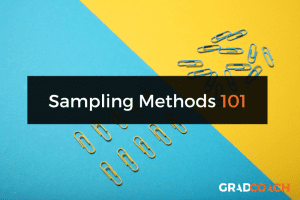
85 Comments
This has been very helpful. Thank you.
Thank you madam,
Thank you so much for this information
I wonder it so clear for understand and good for me. can I ask additional query?
Very insightful and useful
Good work done with clear explanations. Thank you.
Thanks so much for the write-up, it’s really good.
Thanks madam . It is very important .
thank you very good
Great presentation
This has been very well explained in simple language . It is useful even for a new researcher.
Great to hear that. Good luck with your qualitative data analysis, Pramod!
This is very useful information. And it was very a clear language structured presentation. Thanks a lot.
Thank you so much.
very informative sequential presentation
Precise explanation of method.
Hi, may we use 2 data analysis methods in our qualitative research?
Thanks for your comment. Most commonly, one would use one type of analysis method, but it depends on your research aims and objectives.
You explained it in very simple language, everyone can understand it. Thanks so much.
Thank you very much, this is very helpful. It has been explained in a very simple manner that even a layman understands
Thank nicely explained can I ask is Qualitative content analysis the same as thematic analysis?
Thanks for your comment. No, QCA and thematic are two different types of analysis. This article might help clarify – https://onlinelibrary.wiley.com/doi/10.1111/nhs.12048
This is my first time to come across a well explained data analysis. so helpful.
I have thoroughly enjoyed your explanation of the six qualitative analysis methods. This is very helpful. Thank you!
Thank you very much, this is well explained and useful
i need a citation of your book.
Thanks a lot , remarkable indeed, enlighting to the best
Hi Derek, What other theories/methods would you recommend when the data is a whole speech?
Keep writing useful artikel.
It is important concept about QDA and also the way to express is easily understandable, so thanks for all.
Thank you, this is well explained and very useful.
Very helpful .Thanks.
Hi there! Very well explained. Simple but very useful style of writing. Please provide the citation of the text. warm regards
The session was very helpful and insightful. Thank you
This was very helpful and insightful. Easy to read and understand
As a professional academic writer, this has been so informative and educative. Keep up the good work Grad Coach you are unmatched with quality content for sure.
Keep up the good work Grad Coach you are unmatched with quality content for sure.
Its Great and help me the most. A Million Thanks you Dr.
It is a very nice work
Very insightful. Please, which of this approach could be used for a research that one is trying to elicit students’ misconceptions in a particular concept ?
This is Amazing and well explained, thanks
great overview
What do we call a research data analysis method that one use to advise or determining the best accounting tool or techniques that should be adopted in a company.
Informative video, explained in a clear and simple way. Kudos
Waoo! I have chosen method wrong for my data analysis. But I can revise my work according to this guide. Thank you so much for this helpful lecture.
This has been very helpful. It gave me a good view of my research objectives and how to choose the best method. Thematic analysis it is.
Very helpful indeed. Thanku so much for the insight.
This was incredibly helpful.
Very helpful.
very educative
Nicely written especially for novice academic researchers like me! Thank you.
choosing a right method for a paper is always a hard job for a student, this is a useful information, but it would be more useful personally for me, if the author provide me with a little bit more information about the data analysis techniques in type of explanatory research. Can we use qualitative content analysis technique for explanatory research ? or what is the suitable data analysis method for explanatory research in social studies?
that was very helpful for me. because these details are so important to my research. thank you very much
I learnt a lot. Thank you
Relevant and Informative, thanks !
Well-planned and organized, thanks much! 🙂
I have reviewed qualitative data analysis in a simplest way possible. The content will highly be useful for developing my book on qualitative data analysis methods. Cheers!
Clear explanation on qualitative and how about Case study
This was helpful. Thank you
This was really of great assistance, it was just the right information needed. Explanation very clear and follow.
Wow, Thanks for making my life easy
This was helpful thanks .
Very helpful…. clear and written in an easily understandable manner. Thank you.
This was so helpful as it was easy to understand. I’m a new to research thank you so much.
so educative…. but Ijust want to know which method is coding of the qualitative or tallying done?
Thank you for the great content, I have learnt a lot. So helpful
precise and clear presentation with simple language and thank you for that.
very informative content, thank you.
You guys are amazing on YouTube on this platform. Your teachings are great, educative, and informative. kudos!
Brilliant Delivery. You made a complex subject seem so easy. Well done.
Beautifully explained.
Thanks a lot
Is there a video the captures the practical process of coding using automated applications?
Thanks for the comment. We don’t recommend using automated applications for coding, as they are not sufficiently accurate in our experience.
content analysis can be qualitative research?
THANK YOU VERY MUCH.
Thank you very much for such a wonderful content
do you have any material on Data collection
What a powerful explanation of the QDA methods. Thank you.
Great explanation both written and Video. i have been using of it on a day to day working of my thesis project in accounting and finance. Thank you very much for your support.
very helpful, thank you so much
Submit a Comment Cancel reply
Your email address will not be published. Required fields are marked *
Save my name, email, and website in this browser for the next time I comment.
- Print Friendly
- (855) 776-7763
Training Maker
All Products
Qualaroo Insights
ProProfs.com
- Sign Up Free
Do you want a free Survey Software?
We have the #1 Online Survey Maker Software to get actionable user insights.
Qualitative Research Methods: Types, Examples, and Analysis

In a universe swarming with data, numbers, and algorithms, lies a lesser-known realm where emotions, stories, and intimate revelations take center stage. When you want to get inside your customers’ heads to understand their thoughts, feelings, perceptions, beliefs, and emotions, numbers are unlikely to provide a complete picture.
Let’s set the scene: picture a cozy bakery buzzing with conversations. People from different walks of life gather, each carrying a unique story to tell. You observe that your sale of pancakes is more than that of pastries, numerical data will tell you that much. But numbers won’t tell you why.
This is exactly where qualitative surveys come into play; they take you right to the heart of people’s minds and experiences – the “why” behind the statistics.
Quantitative data may offer a bird’s-eye view of the crowd, but qualitative surveys open the doorways to your audience’s individual tales. In this blog, we are going to explore qualitative research, its types, analytical procedures, positive and negative aspects, and examples.
Here we go!
What Is Qualitative Research?
Qualitative research is a branch of market research that involves collecting and analyzing qualitative data through open-ended communication. The primary purpose of conducting qualitative research is to understand the individual’s thoughts, feelings, opinions, and reasons behind these emotions.
It is used to gather in-depth and rich insights into a particular topic. Understanding how your audience feels about a specific subject helps make informed decisions in research.
As opposed to quantitative research, qualitative research does not deal with the collection of numerical data for statistical analysis. The application of this research method is usually found in humanities and social science subjects like sociology, history, anthropology, health science, education, etc.
Types of Qualitative Research Methods
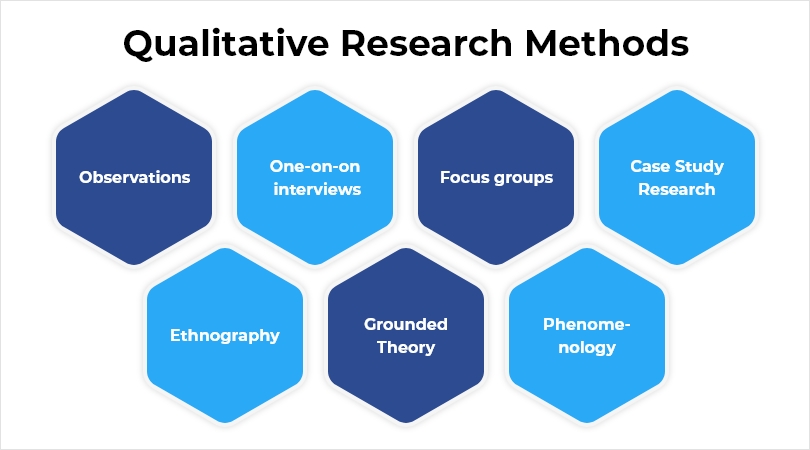
Qualitative research methods are designed to understand the behavior and perception of the target audience about a particular subject.
Qualitative research methods include observations, one-on-one interviews, case study research, focus groups, ethnographic research, phenomenology, and grounded theory.
Let’s discuss them one by one.
1. Observations
Observation is one of the oldest qualitative methods of research used to collect systematic data using subjective methodologies. It is based on five primary sense organs – smell, sight, taste, touch, and hearing, and their functioning. This method focuses on characteristics and qualities rather than numbers.
The qualitative observation technique involves observing the interaction patterns in a particular situation. Researchers collect data by closely watching the behaviors of others. They rely on their ability to observe the target audience rather than communicating with people about their thoughts on a particular subject.
2. One-on-One Interviews
Conducting one-on-one interviews is one of the most common types of qualitative research methods. Although both open-ended and closed-ended questions can be a part of these interviews, open-ended conservation between researchers and participants related to a particular subject is still the preferred mode of communication. This is to gather in-depth qualitative data for the research purpose.
Here, the researcher asks pre-determined questions to the participants to collect specific information about their research topic. Interviews can be conducted face-to-face, by email, or by phone. The drawback of this method is that sometimes the participants feel uncomfortable sharing honest answers with the researcher.
3. Focus Groups
A Focus group involves collecting qualitative data by conducting a group discussion of 6-12 members along with a moderator related to a particular subject. Here the moderator asks respondents a set of predetermined questions so that they can interact with each other and form a group discussion. It helps researchers to collect rich qualitative data about their market research.
However, it is essential to ensure that the moderator asks open-ended questions like “how,” “what,” and “why” that will enable participants to share their thoughts and feelings.
Close-ended questions like “yes” and “no” should be avoided as they do not lead to engagement among participants.
4. Case Study Research
A case study is another example of qualitative research that involves a comprehensive examination of a particular subject, person, or event.

This method is used to obtain in-depth data and complete knowledge of the subject. The data is collected from various sources like interviews and observation to supplement the conclusion.
This qualitative approach is extensively used in the field of social sciences, law, business, and health. Many companies use this technique when marketing their products/services to new customers. It tells them how their business offerings can solve a particular problem. Let’s discuss an example of this method of qualitative research.
5. Digital Ethnography
This is an innovative form of qualitative research that focuses on understanding people and their cultures in the context of the digital realm. Digital ethnography aims to study individuals’ behavior, interactions, and social dynamics within online environments and digital communities.
In digital ethnography, the researcher acts as both an observer and a participant in these said online communities to gain firsthand insight into the lifestyles, cultures, and traditions of people navigating these digital landscapes.
Unlike traditional ethnography, digital ethnography is more efficient and accessible. The studies are conducted remotely, reducing the need for extended physical presence in a specific location, and the data collection process is often more streamlined.
6. Grounded Theory
This is another data collection method of qualitative research used across various disciplines. The Grounded Theory aims to provide the reasons, theories, and explanations behind an event. It focuses on why a course of action has happened the way it did.
The grounded theory model collects and analyzes the data to develop new theories about the subject. The data is collected using different techniques like observation, literature review, and document analysis.
This qualitative method is majorly used in business for conducting user satisfaction surveys to explain why a customer purchases a particular product or service. It helps companies in managing customer loyalty.
Watch: How to Create a Customer Satisfaction Survey
7. Phenomenology
Phenomenology is another qualitative research example that describes how an individual experiences or feels about a particular event. It also explores the experience of a specific event in a community.
Here, the researcher interviews people who have experienced a particular event to find similarities between their experiences. The researcher can also record what they learn from the target audience to maintain the credibility of the data.
Although this qualitative technique depends majorly on interviews, other data collection methods like observation, interviews, and survey questionnaires are also used to supplement the findings. The application of this method is found in psychology, philosophy, and education.
For example, to prompt a participant to share their experience around an event they encountered, you can ask:
“What was your experience like when you first encountered [a specific phenomenon or event]?”
8. Record Keeping
This approach involves using existing trustworthy documents and other reliable sources as the basis of data for new research. It’s comparable to visiting a library, where you can explore books and reference materials to gather relevant data that might be helpful for your research.
How Do You Analyze Qualitative Data?

1. Arranging the Data
Qualitative data is collected in different forms like audio recordings, interviews, video transcriptions, etc. This step involves arranging all the collected data in the text format in the spreadsheet. This can be done either manually or with the help of data analysis tools.
2. Organizing the Data
Even after putting the data into a spreadsheet, the data is still messy and hard to read. Due to this, the data needs to be organized in a readable and understandable pattern.
For example, you can organize data based on questions asked. Organize your data in such a way that it appears visually clear. Data organization can be tedious, but it is essential for the next step.
3. Assigning Codes
Developing codes for the data helps simplify the data analysis methods in qualitative research. Assigning code implies categorizing and setting patterns and properties to the collected data. It helps in compressing the vast amount of information collected. By developing codes for your data, you can gather deep insight into the data to make informed business decisions.
4. Analyzing the Data
Qualitative data cannot be analyzed based on any universally accepted equation like quantitative data. Qualitative data analysis depends on the thinking and logical skill of the researcher.

However, there are a few techniques by which you can easily interpret data by identifying themes and patterns between sample responses:
- Checking the data for repetitive words and phrases commonly used by the audience in their answers.
- Comparing the primary and secondary data collection to find the difference between them.
- Scanning the data for expected information that has not been included in answers provided by respondents.
5. Summarizing the Data
The final stage is to link the qualitative data to the hypothesis. Highlight significant themes, patterns, and trends by using essential quotes from the data, as well as any possible contradictions.

One of the main things about qualitative data is that there isn’t a single, formal way to collect and analyze data. Each research project will have its own set of methods and techniques that it needs to use.
The key is to look at the specific needs of each project and change the research method accordingly.
Advantages and Limitations of Qualitative Research
Qualitative market research techniques offer a more comprehensive and complete picture of the subject than quantitative research, which focuses on specific and narrow areas. Other advantages of using qualitative research methods are:
- Explore the subject in-depth: Qualitative research is personal and offers a deep understanding of the respondent’s feelings, thoughts, and actions so that the researcher can perform an in-depth analysis of the subject.
- Promotes discussion: Qualitative research methods are open-ended in approach rather than rigorously following a predetermined set of questions. It adds context to the research rather than just numbers.
- More flexibility: The interviewer can study and ask questions on the subject they feel is pertinent or had not previously thought about during the discussions. Moreover, open-ended questions enable respondents to be free to share their thoughts, leading to more information.
- Capture trends as they change: Qualitative research can track how people’s feelings and attitudes change over time. Respondents’ opinions can change during the conversation, and qualitative research can show this.
With that being said, however, we do not mean that qualitative data is entirely devoid of flaws. Like most things, it, too, has its fair share of limitations, the prime among them being:
- Subjectivity: Qualitative data can be influenced by the researcher’s bias or interpretation, potentially affecting the objectivity of the findings. The absence of strict guidelines in qualitative research can lead to variations in data collection and analysis too.
- Time-Consuming & Resource-Intensive: Conducting qualitative research can be a lengthy process, from data collection through transcription and analysis. It also often requires skilled researchers, making it more resource-intensive compared to some quantitative methods.
- Difficulty in Analysis: Analyzing qualitative data can be complex, as it involves coding, categorizing, and interpreting open-ended responses. This data category often does not lend itself well to traditional statistical tests, limiting the depth of statistical analysis as well.
- Challenges in Replication: Replicating qualitative studies can be challenging due to the unique context and interactions involved.
Advantages of Using Website Surveys for Qualitative Research
The role of surveys and questionnaires in collecting quantitative data is pretty obvious, but how exactly would you use them to capture qualitative data, and why? Well, for starters, website surveys offer numerous advantages here, such as letting researchers explore diverse perspectives, collect rich and detailed data, conduct cost-effective and time-efficient studies, etc.
Let’s have a brief rundown of the significant benefits below:
Reach and Diversity: Website surveys enable researchers to engage with a diverse and global audience. They break geographical barriers, allowing participation from individuals residing in different regions, cultures, and backgrounds, leading to a richer pool of perspectives.
- Cost-Effectiveness: Conducting traditional face-to-face qualitative research can be expensive and time-consuming. In contrast, website surveys are cost-effective, as they eliminate the need for travel, venue rentals, and other logistical expenses.
- Convenience and Flexibility: Website surveys offer unparalleled convenience to both researchers and participants. Respondents can take part in the study at their own pace and preferred time, promoting higher response rates and reducing non-response bias.
- Anonymity and Honesty: Participants often feel more comfortable expressing themselves honestly in online surveys. Anonymity ensures confidentiality, encouraging candid responses, and allowing researchers to gain deeper insights into personal experiences and opinions.
- Rich Data Collection: Website surveys can accommodate various question types, including open-ended questions, allowing respondents to elaborate on their thoughts. This results in the collection of rich, detailed, and nuanced data, enriching the qualitative analysis.
- Time-Efficient Data Collection: Website surveys facilitate efficient data collection, reaching a large number of participants in a short span. Researchers can access real-time data, enabling quick analysis and timely decision-making.
- Ease of Analysis: Online survey platforms often provide tools for automated data analysis, simplifying the coding and categorization process. Researchers can swiftly identify themes and patterns, expediting the interpretation of qualitative findings.
- Longitudinal Studies: Website surveys are well-suited for longitudinal studies, as they allow researchers to follow up with the same participants over an extended period. This longitudinal approach enables the exploration of changes in attitudes or behaviors over time.
- Integration with Multimedia: Website surveys can seamlessly incorporate multimedia elements, such as images, videos, or audio clips, enabling respondents to provide more context and depth to their responses.
- Eco-Friendly Approach: By reducing the need for paper and physical materials, website surveys promote a sustainable and eco-friendly approach to data collection, aligning with responsible research practices.
Most website survey tools are equipped with features that efficiently collect and analyze diverse perspectives, ultimately furthering your data collection process. For example:
- Question Customization: These tools allow users to create and customize a wide range of questions, including open-ended, closed-ended, rating scale, and more. This flexibility allows participants to express their thoughts and feelings in their own words, paving the way for gathering diverse qualitative data.
- Anonymity and Confidentiality: Ensuring confidentiality in qualitative research is crucial for building trust and obtaining more accurate and sensitive data. Participants can often remain anonymous when using website survey tools, which can encourage them to provide honest and candid responses.
- Data Analysis Support: Many website survey tools offer built-in data analysis features, such as basic statistical summaries and visualizations. While these features are more suited for quantitative data, they can still aid in organizing and understanding qualitative responses, making the analysis process more manageable.
- Flexibility in Survey Design: Researchers can use skip logic and branching features in these tools to create dynamic surveys that adapt based on participants’ responses. This can be greatly valuable in qualitative research, where participants’ experiences might vary widely.
- Ease of Participation: Participants can access website surveys using various devices like computers, tablets, or smartphones, making it convenient and accessible for them to take part in the research. This ease of participation can contribute to a higher response rate and a more diverse participant pool.
- Data Storage and Security: Many website survey tools offer secure data storage and backup, ensuring the safety of the collected qualitative data. This feature is essential for maintaining the confidentiality and integrity of participants’ responses.
Examples of Website Survey Questions for Qualitative Research
These examples can greatly help in targeting customers through Click-to-WhatsApp Ads on various social media platforms. Crafting effective survey questions is crucial for qualitative research. Ensuring clarity, avoiding leading questions, and maintaining a balanced mix of question types is paramount if you are looking to gather comprehensive and valuable qualitative data.
With well-designed website survey questions, you can delve deep into participants’ thoughts, emotions, and experiences, providing a solid foundation for insightful qualitative analysis.
Let’s explore some of the prime examples:
1. Open-Ended Questions (Exploratory):
- “Please describe your experience with our product/service in your own words.”
- “What are the main challenges you face in your daily work?”

2. Multiple-Choice Questions (Categorization):
“Which age group do you belong to?”
- 18-25 years
- 26-35 years
- 36-45 years
- 46-55 years

3. Likert Scale Questions (Rating/Opinion): “On a scale of 1 to 5, how satisfied are you with our customer support?” 1 (Not satisfied at all) 2 (Slightly satisfied) 3 (Moderately satisfied) 4 (Very satisfied) 5 (Extremely satisfied)

4. Ranking Questions (Preference):
“Please rank the following factors in order of importance for choosing a smartphone:”
- Battery life
- Camera quality
- Processor speed
- Display resolution
5. Semantic Differential Questions (Contrast): “How would you describe our website’s user interface?”
- Difficult _ Easy Unattractive Attractive
- Confusing ___ Clear
6. Picture Choice Questions (Visual Feedback):
“Which logo do you find more appealing for our brand?”
- Option A (Image)
- Option B (Image)
7. Demographic Questions (Participant Profiling):
“Which of the following best describes your occupation?”
- Professional
8. Dichotomous Questions (Yes/No):
- “Have you ever purchased products from our online store?”

9. Follow-Up Probing Questions (In-depth Insight):
- “You mentioned facing challenges at work. Could you please elaborate on the specific challenges you encounter?”
10. Experience-Based Questions (Narrative):
- “Tell us about a memorable customer service experience you’ve had, whether positive or negative.”
Ready to Obtain Quality Data Using Qualitative Research?
So, there you have it all about qualitative research methods: their types, examples, use, and importance. Quantitative research is one of the most effective instruments to understand individuals’ thoughts and feelings or identify their needs and problems.
After figuring out the problem, quantitative research is used to make the conclusion and offer a reliable solution for business.
You can also supplement your qualitative market research with ProProfs Survey Maker to reach your target audience more effectively and in a shorter duration. Use the 15-day free trial to enhance your qualitative research – no commitment, no credit card details!

About the author
Emma David is a seasoned market research professional with 8+ years of experience. Having kick-started her journey in research, she has developed rich expertise in employee engagement, survey creation and administration, and data management. Emma believes in the power of data to shape business performance positively. She continues to help brands and businesses make strategic decisions and improve their market standing through her understanding of research methodologies.
Popular Posts in This Category

Client Onboarding Questionnaire: Best Practices & 20+ Questions

How to Use Surveys for Content Marketing

Employee Pulse Surveys: Everything You Need To Know

How to Use Real Time Feedback Survey for Business Growth & Development

How to Calculate NPS (Net Promoter Score)

What is a Web Survey: Definition, Types & Characteristics
Have a language expert improve your writing
Run a free plagiarism check in 10 minutes, automatically generate references for free.
- Knowledge Base
- Methodology
- What Is Qualitative Research? | Methods & Examples
What Is Qualitative Research? | Methods & Examples
Published on 4 April 2022 by Pritha Bhandari . Revised on 30 January 2023.
Qualitative research involves collecting and analysing non-numerical data (e.g., text, video, or audio) to understand concepts, opinions, or experiences. It can be used to gather in-depth insights into a problem or generate new ideas for research.
Qualitative research is the opposite of quantitative research , which involves collecting and analysing numerical data for statistical analysis.
Qualitative research is commonly used in the humanities and social sciences, in subjects such as anthropology, sociology, education, health sciences, and history.
- How does social media shape body image in teenagers?
- How do children and adults interpret healthy eating in the UK?
- What factors influence employee retention in a large organisation?
- How is anxiety experienced around the world?
- How can teachers integrate social issues into science curriculums?
Table of contents
Approaches to qualitative research, qualitative research methods, qualitative data analysis, advantages of qualitative research, disadvantages of qualitative research, frequently asked questions about qualitative research.
Qualitative research is used to understand how people experience the world. While there are many approaches to qualitative research, they tend to be flexible and focus on retaining rich meaning when interpreting data.
Common approaches include grounded theory, ethnography, action research, phenomenological research, and narrative research. They share some similarities, but emphasise different aims and perspectives.
Prevent plagiarism, run a free check.
Each of the research approaches involve using one or more data collection methods . These are some of the most common qualitative methods:
- Observations: recording what you have seen, heard, or encountered in detailed field notes.
- Interviews: personally asking people questions in one-on-one conversations.
- Focus groups: asking questions and generating discussion among a group of people.
- Surveys : distributing questionnaires with open-ended questions.
- Secondary research: collecting existing data in the form of texts, images, audio or video recordings, etc.
- You take field notes with observations and reflect on your own experiences of the company culture.
- You distribute open-ended surveys to employees across all the company’s offices by email to find out if the culture varies across locations.
- You conduct in-depth interviews with employees in your office to learn about their experiences and perspectives in greater detail.
Qualitative researchers often consider themselves ‘instruments’ in research because all observations, interpretations and analyses are filtered through their own personal lens.
For this reason, when writing up your methodology for qualitative research, it’s important to reflect on your approach and to thoroughly explain the choices you made in collecting and analysing the data.
Qualitative data can take the form of texts, photos, videos and audio. For example, you might be working with interview transcripts, survey responses, fieldnotes, or recordings from natural settings.
Most types of qualitative data analysis share the same five steps:
- Prepare and organise your data. This may mean transcribing interviews or typing up fieldnotes.
- Review and explore your data. Examine the data for patterns or repeated ideas that emerge.
- Develop a data coding system. Based on your initial ideas, establish a set of codes that you can apply to categorise your data.
- Assign codes to the data. For example, in qualitative survey analysis, this may mean going through each participant’s responses and tagging them with codes in a spreadsheet. As you go through your data, you can create new codes to add to your system if necessary.
- Identify recurring themes. Link codes together into cohesive, overarching themes.
There are several specific approaches to analysing qualitative data. Although these methods share similar processes, they emphasise different concepts.
Qualitative research often tries to preserve the voice and perspective of participants and can be adjusted as new research questions arise. Qualitative research is good for:
- Flexibility
The data collection and analysis process can be adapted as new ideas or patterns emerge. They are not rigidly decided beforehand.
- Natural settings
Data collection occurs in real-world contexts or in naturalistic ways.
- Meaningful insights
Detailed descriptions of people’s experiences, feelings and perceptions can be used in designing, testing or improving systems or products.
- Generation of new ideas
Open-ended responses mean that researchers can uncover novel problems or opportunities that they wouldn’t have thought of otherwise.
Researchers must consider practical and theoretical limitations in analysing and interpreting their data. Qualitative research suffers from:
- Unreliability
The real-world setting often makes qualitative research unreliable because of uncontrolled factors that affect the data.
- Subjectivity
Due to the researcher’s primary role in analysing and interpreting data, qualitative research cannot be replicated . The researcher decides what is important and what is irrelevant in data analysis, so interpretations of the same data can vary greatly.
- Limited generalisability
Small samples are often used to gather detailed data about specific contexts. Despite rigorous analysis procedures, it is difficult to draw generalisable conclusions because the data may be biased and unrepresentative of the wider population .
- Labour-intensive
Although software can be used to manage and record large amounts of text, data analysis often has to be checked or performed manually.
Quantitative research deals with numbers and statistics, while qualitative research deals with words and meanings.
Quantitative methods allow you to test a hypothesis by systematically collecting and analysing data, while qualitative methods allow you to explore ideas and experiences in depth.
There are five common approaches to qualitative research :
- Grounded theory involves collecting data in order to develop new theories.
- Ethnography involves immersing yourself in a group or organisation to understand its culture.
- Narrative research involves interpreting stories to understand how people make sense of their experiences and perceptions.
- Phenomenological research involves investigating phenomena through people’s lived experiences.
- Action research links theory and practice in several cycles to drive innovative changes.
Data collection is the systematic process by which observations or measurements are gathered in research. It is used in many different contexts by academics, governments, businesses, and other organisations.
There are various approaches to qualitative data analysis , but they all share five steps in common:
- Prepare and organise your data.
- Review and explore your data.
- Develop a data coding system.
- Assign codes to the data.
- Identify recurring themes.
The specifics of each step depend on the focus of the analysis. Some common approaches include textual analysis , thematic analysis , and discourse analysis .
Cite this Scribbr article
If you want to cite this source, you can copy and paste the citation or click the ‘Cite this Scribbr article’ button to automatically add the citation to our free Reference Generator.
Bhandari, P. (2023, January 30). What Is Qualitative Research? | Methods & Examples. Scribbr. Retrieved 3 June 2024, from https://www.scribbr.co.uk/research-methods/introduction-to-qualitative-research/
Is this article helpful?

Pritha Bhandari
An official website of the United States government
The .gov means it’s official. Federal government websites often end in .gov or .mil. Before sharing sensitive information, make sure you’re on a federal government site.
The site is secure. The https:// ensures that you are connecting to the official website and that any information you provide is encrypted and transmitted securely.
- Publications
- Account settings
Preview improvements coming to the PMC website in October 2024. Learn More or Try it out now .
- Advanced Search
- Journal List
- Int J Prev Med
Qualitative Methods in Health Care Research
Vishnu renjith.
School of Nursing and Midwifery, Royal College of Surgeons Ireland - Bahrain (RCSI Bahrain), Al Sayh Muharraq Governorate, Bahrain
Renjulal Yesodharan
1 Department of Mental Health Nursing, Manipal College of Nursing Manipal, Manipal Academy of Higher Education, Manipal, Karnataka, India
Judith A. Noronha
2 Department of OBG Nursing, Manipal College of Nursing Manipal, Manipal Academy of Higher Education, Manipal, Karnataka, India
Elissa Ladd
3 School of Nursing, MGH Institute of Health Professions, Boston, USA
Anice George
4 Department of Child Health Nursing, Manipal College of Nursing Manipal, Manipal Academy of Higher Education, Manipal, Karnataka, India
Healthcare research is a systematic inquiry intended to generate robust evidence about important issues in the fields of medicine and healthcare. Qualitative research has ample possibilities within the arena of healthcare research. This article aims to inform healthcare professionals regarding qualitative research, its significance, and applicability in the field of healthcare. A wide variety of phenomena that cannot be explained using the quantitative approach can be explored and conveyed using a qualitative method. The major types of qualitative research designs are narrative research, phenomenological research, grounded theory research, ethnographic research, historical research, and case study research. The greatest strength of the qualitative research approach lies in the richness and depth of the healthcare exploration and description it makes. In health research, these methods are considered as the most humanistic and person-centered way of discovering and uncovering thoughts and actions of human beings.
Introduction
Healthcare research is a systematic inquiry intended to generate trustworthy evidence about issues in the field of medicine and healthcare. The three principal approaches to health research are the quantitative, the qualitative, and the mixed methods approach. The quantitative research method uses data, which are measures of values and counts and are often described using statistical methods which in turn aids the researcher to draw inferences. Qualitative research incorporates the recording, interpreting, and analyzing of non-numeric data with an attempt to uncover the deeper meanings of human experiences and behaviors. Mixed methods research, the third methodological approach, involves collection and analysis of both qualitative and quantitative information with an objective to solve different but related questions, or at times the same questions.[ 1 , 2 ]
In healthcare, qualitative research is widely used to understand patterns of health behaviors, describe lived experiences, develop behavioral theories, explore healthcare needs, and design interventions.[ 1 , 2 , 3 ] Because of its ample applications in healthcare, there has been a tremendous increase in the number of health research studies undertaken using qualitative methodology.[ 4 , 5 ] This article discusses qualitative research methods, their significance, and applicability in the arena of healthcare.
Qualitative Research
Diverse academic and non-academic disciplines utilize qualitative research as a method of inquiry to understand human behavior and experiences.[ 6 , 7 ] According to Munhall, “Qualitative research involves broadly stated questions about human experiences and realities, studied through sustained contact with the individual in their natural environments and producing rich, descriptive data that will help us to understand those individual's experiences.”[ 8 ]
Significance of Qualitative Research
The qualitative method of inquiry examines the 'how' and 'why' of decision making, rather than the 'when,' 'what,' and 'where.'[ 7 ] Unlike quantitative methods, the objective of qualitative inquiry is to explore, narrate, and explain the phenomena and make sense of the complex reality. Health interventions, explanatory health models, and medical-social theories could be developed as an outcome of qualitative research.[ 9 ] Understanding the richness and complexity of human behavior is the crux of qualitative research.
Differences between Quantitative and Qualitative Research
The quantitative and qualitative forms of inquiry vary based on their underlying objectives. They are in no way opposed to each other; instead, these two methods are like two sides of a coin. The critical differences between quantitative and qualitative research are summarized in Table 1 .[ 1 , 10 , 11 ]
Differences between quantitative and qualitative research
Qualitative Research Questions and Purpose Statements
Qualitative questions are exploratory and are open-ended. A well-formulated study question forms the basis for developing a protocol, guides the selection of design, and data collection methods. Qualitative research questions generally involve two parts, a central question and related subquestions. The central question is directed towards the primary phenomenon under study, whereas the subquestions explore the subareas of focus. It is advised not to have more than five to seven subquestions. A commonly used framework for designing a qualitative research question is the 'PCO framework' wherein, P stands for the population under study, C stands for the context of exploration, and O stands for the outcome/s of interest.[ 12 ] The PCO framework guides researchers in crafting a focused study question.
Example: In the question, “What are the experiences of mothers on parenting children with Thalassemia?”, the population is “mothers of children with Thalassemia,” the context is “parenting children with Thalassemia,” and the outcome of interest is “experiences.”
The purpose statement specifies the broad focus of the study, identifies the approach, and provides direction for the overall goal of the study. The major components of a purpose statement include the central phenomenon under investigation, the study design and the population of interest. Qualitative research does not require a-priori hypothesis.[ 13 , 14 , 15 ]
Example: Borimnejad et al . undertook a qualitative research on the lived experiences of women suffering from vitiligo. The purpose of this study was, “to explore lived experiences of women suffering from vitiligo using a hermeneutic phenomenological approach.” [ 16 ]
Review of the Literature
In quantitative research, the researchers do an extensive review of scientific literature prior to the commencement of the study. However, in qualitative research, only a minimal literature search is conducted at the beginning of the study. This is to ensure that the researcher is not influenced by the existing understanding of the phenomenon under the study. The minimal literature review will help the researchers to avoid the conceptual pollution of the phenomenon being studied. Nonetheless, an extensive review of the literature is conducted after data collection and analysis.[ 15 ]
Reflexivity
Reflexivity refers to critical self-appraisal about one's own biases, values, preferences, and preconceptions about the phenomenon under investigation. Maintaining a reflexive diary/journal is a widely recognized way to foster reflexivity. According to Creswell, “Reflexivity increases the credibility of the study by enhancing more neutral interpretations.”[ 7 ]
Types of Qualitative Research Designs
The qualitative research approach encompasses a wide array of research designs. The words such as types, traditions, designs, strategies of inquiry, varieties, and methods are used interchangeably. The major types of qualitative research designs are narrative research, phenomenological research, grounded theory research, ethnographic research, historical research, and case study research.[ 1 , 7 , 10 ]
Narrative research
Narrative research focuses on exploring the life of an individual and is ideally suited to tell the stories of individual experiences.[ 17 ] The purpose of narrative research is to utilize 'story telling' as a method in communicating an individual's experience to a larger audience.[ 18 ] The roots of narrative inquiry extend to humanities including anthropology, literature, psychology, education, history, and sociology. Narrative research encompasses the study of individual experiences and learning the significance of those experiences. The data collection procedures include mainly interviews, field notes, letters, photographs, diaries, and documents collected from one or more individuals. Data analysis involves the analysis of the stories or experiences through “re-storying of stories” and developing themes usually in chronological order of events. Rolls and Payne argued that narrative research is a valuable approach in health care research, to gain deeper insight into patient's experiences.[ 19 ]
Example: Karlsson et al . undertook a narrative inquiry to “explore how people with Alzheimer's disease present their life story.” Data were collected from nine participants. They were asked to describe about their life experiences from childhood to adulthood, then to current life and their views about the future life. [ 20 ]
Phenomenological research
Phenomenology is a philosophical tradition developed by German philosopher Edmond Husserl. His student Martin Heidegger did further developments in this methodology. It defines the 'essence' of individual's experiences regarding a certain phenomenon.[ 1 ] The methodology has its origin from philosophy, psychology, and education. The purpose of qualitative research is to understand the people's everyday life experiences and reduce it into the central meaning or the 'essence of the experience'.[ 21 , 22 ] The unit of analysis of phenomenology is the individuals who have had similar experiences of the phenomenon. Interviews with individuals are mainly considered for the data collection, though, documents and observations are also useful. Data analysis includes identification of significant meaning elements, textural description (what was experienced), structural description (how was it experienced), and description of 'essence' of experience.[ 1 , 7 , 21 ] The phenomenological approach is further divided into descriptive and interpretive phenomenology. Descriptive phenomenology focuses on the understanding of the essence of experiences and is best suited in situations that need to describe the lived phenomenon. Hermeneutic phenomenology or Interpretive phenomenology moves beyond the description to uncover the meanings that are not explicitly evident. The researcher tries to interpret the phenomenon, based on their judgment rather than just describing it.[ 7 , 21 , 22 , 23 , 24 ]
Example: A phenomenological study conducted by Cornelio et al . aimed at describing the lived experiences of mothers in parenting children with leukemia. Data from ten mothers were collected using in-depth semi-structured interviews and were analyzed using Husserl's method of phenomenology. Themes such as “pivotal moment in life”, “the experience of being with a seriously ill child”, “having to keep distance with the relatives”, “overcoming the financial and social commitments”, “responding to challenges”, “experience of faith as being key to survival”, “health concerns of the present and future”, and “optimism” were derived. The researchers reported the essence of the study as “chronic illness such as leukemia in children results in a negative impact on the child and on the mother.” [ 25 ]
Grounded Theory Research
Grounded theory has its base in sociology and propagated by two sociologists, Barney Glaser, and Anselm Strauss.[ 26 ] The primary purpose of grounded theory is to discover or generate theory in the context of the social process being studied. The major difference between grounded theory and other approaches lies in its emphasis on theory generation and development. The name grounded theory comes from its ability to induce a theory grounded in the reality of study participants.[ 7 , 27 ] Data collection in grounded theory research involves recording interviews from many individuals until data saturation. Constant comparative analysis, theoretical sampling, theoretical coding, and theoretical saturation are unique features of grounded theory research.[ 26 , 27 , 28 ] Data analysis includes analyzing data through 'open coding,' 'axial coding,' and 'selective coding.'[ 1 , 7 ] Open coding is the first level of abstraction, and it refers to the creation of a broad initial range of categories, axial coding is the procedure of understanding connections between the open codes, whereas selective coding relates to the process of connecting the axial codes to formulate a theory.[ 1 , 7 ] Results of the grounded theory analysis are supplemented with a visual representation of major constructs usually in the form of flow charts or framework diagrams. Quotations from the participants are used in a supportive capacity to substantiate the findings. Strauss and Corbin highlights that “the value of the grounded theory lies not only in its ability to generate a theory but also to ground that theory in the data.”[ 27 ]
Example: Williams et al . conducted a grounded theory research to explore the nature of relationship between the sense of self and the eating disorders. Data were collected form 11 women with a lifetime history of Anorexia Nervosa and were analyzed using the grounded theory methodology. Analysis led to the development of a theoretical framework on the nature of the relationship between the self and Anorexia Nervosa. [ 29 ]
Ethnographic research
Ethnography has its base in anthropology, where the anthropologists used it for understanding the culture-specific knowledge and behaviors. In health sciences research, ethnography focuses on narrating and interpreting the health behaviors of a culture-sharing group. 'Culture-sharing group' in an ethnography represents any 'group of people who share common meanings, customs or experiences.' In health research, it could be a group of physicians working in rural care, a group of medical students, or it could be a group of patients who receive home-based rehabilitation. To understand the cultural patterns, researchers primarily observe the individuals or group of individuals for a prolonged period of time.[ 1 , 7 , 30 ] The scope of ethnography can be broad or narrow depending on the aim. The study of more general cultural groups is termed as macro-ethnography, whereas micro-ethnography focuses on more narrowly defined cultures. Ethnography is usually conducted in a single setting. Ethnographers collect data using a variety of methods such as observation, interviews, audio-video records, and document reviews. A written report includes a detailed description of the culture sharing group with emic and etic perspectives. When the researcher reports the views of the participants it is called emic perspectives and when the researcher reports his or her views about the culture, the term is called etic.[ 7 ]
Example: The aim of the ethnographic study by LeBaron et al . was to explore the barriers to opioid availability and cancer pain management in India. The researchers collected data from fifty-nine participants using in-depth semi-structured interviews, participant observation, and document review. The researchers identified significant barriers by open coding and thematic analysis of the formal interview. [ 31 ]
Historical research
Historical research is the “systematic collection, critical evaluation, and interpretation of historical evidence”.[ 1 ] The purpose of historical research is to gain insights from the past and involves interpreting past events in the light of the present. The data for historical research are usually collected from primary and secondary sources. The primary source mainly includes diaries, first hand information, and writings. The secondary sources are textbooks, newspapers, second or third-hand accounts of historical events and medical/legal documents. The data gathered from these various sources are synthesized and reported as biographical narratives or developmental perspectives in chronological order. The ideas are interpreted in terms of the historical context and significance. The written report describes 'what happened', 'how it happened', 'why it happened', and its significance and implications to current clinical practice.[ 1 , 10 ]
Example: Lubold (2019) analyzed the breastfeeding trends in three countries (Sweden, Ireland, and the United States) using a historical qualitative method. Through analysis of historical data, the researcher found that strong family policies, adherence to international recommendations and adoption of baby-friendly hospital initiative could greatly enhance the breastfeeding rates. [ 32 ]

Case study research
Case study research focuses on the description and in-depth analysis of the case(s) or issues illustrated by the case(s). The design has its origin from psychology, law, and medicine. Case studies are best suited for the understanding of case(s), thus reducing the unit of analysis into studying an event, a program, an activity or an illness. Observations, one to one interviews, artifacts, and documents are used for collecting the data, and the analysis is done through the description of the case. From this, themes and cross-case themes are derived. A written case study report includes a detailed description of one or more cases.[ 7 , 10 ]
Example: Perceptions of poststroke sexuality in a woman of childbearing age was explored using a qualitative case study approach by Beal and Millenbrunch. Semi structured interview was conducted with a 36- year mother of two children with a history of Acute ischemic stroke. The data were analyzed using an inductive approach. The authors concluded that “stroke during childbearing years may affect a woman's perception of herself as a sexual being and her ability to carry out gender roles”. [ 33 ]
Sampling in Qualitative Research
Qualitative researchers widely use non-probability sampling techniques such as purposive sampling, convenience sampling, quota sampling, snowball sampling, homogeneous sampling, maximum variation sampling, extreme (deviant) case sampling, typical case sampling, and intensity sampling. The selection of a sampling technique depends on the nature and needs of the study.[ 34 , 35 , 36 , 37 , 38 , 39 , 40 ] The four widely used sampling techniques are convenience sampling, purposive sampling, snowball sampling, and intensity sampling.
Convenience sampling
It is otherwise called accidental sampling, where the researchers collect data from the subjects who are selected based on accessibility, geographical proximity, ease, speed, and or low cost.[ 34 ] Convenience sampling offers a significant benefit of convenience but often accompanies the issues of sample representation.
Purposive sampling
Purposive or purposeful sampling is a widely used sampling technique.[ 35 ] It involves identifying a population based on already established sampling criteria and then selecting subjects who fulfill that criteria to increase the credibility. However, choosing information-rich cases is the key to determine the power and logic of purposive sampling in a qualitative study.[ 1 ]
Snowball sampling
The method is also known as 'chain referral sampling' or 'network sampling.' The sampling starts by having a few initial participants, and the researcher relies on these early participants to identify additional study participants. It is best adopted when the researcher wishes to study the stigmatized group, or in cases, where findings of participants are likely to be difficult by ordinary means. Respondent ridden sampling is an improvised version of snowball sampling used to find out the participant from a hard-to-find or hard-to-study population.[ 37 , 38 ]
Intensity sampling
The process of identifying information-rich cases that manifest the phenomenon of interest is referred to as intensity sampling. It requires prior information, and considerable judgment about the phenomenon of interest and the researcher should do some preliminary investigations to determine the nature of the variation. Intensity sampling will be done once the researcher identifies the variation across the cases (extreme, average and intense) and picks the intense cases from them.[ 40 ]
Deciding the Sample Size
A-priori sample size calculation is not undertaken in the case of qualitative research. Researchers collect the data from as many participants as possible until they reach the point of data saturation. Data saturation or the point of redundancy is the stage where the researcher no longer sees or hears any new information. Data saturation gives the idea that the researcher has captured all possible information about the phenomenon of interest. Since no further information is being uncovered as redundancy is achieved, at this point the data collection can be stopped. The objective here is to get an overall picture of the chronicle of the phenomenon under the study rather than generalization.[ 1 , 7 , 41 ]
Data Collection in Qualitative Research
The various strategies used for data collection in qualitative research includes in-depth interviews (individual or group), focus group discussions (FGDs), participant observation, narrative life history, document analysis, audio materials, videos or video footage, text analysis, and simple observation. Among all these, the three popular methods are the FGDs, one to one in-depth interviews and the participant observation.
FGDs are useful in eliciting data from a group of individuals. They are normally built around a specific topic and are considered as the best approach to gather data on an entire range of responses to a topic.[ 42 Group size in an FGD ranges from 6 to 12. Depending upon the nature of participants, FGDs could be homogeneous or heterogeneous.[ 1 , 14 ] One to one in-depth interviews are best suited to obtain individuals' life histories, lived experiences, perceptions, and views, particularly while exporting topics of sensitive nature. In-depth interviews can be structured, unstructured, or semi-structured. However, semi-structured interviews are widely used in qualitative research. Participant observations are suitable for gathering data regarding naturally occurring behaviors.[ 1 ]
Data Analysis in Qualitative Research
Various strategies are employed by researchers to analyze data in qualitative research. Data analytic strategies differ according to the type of inquiry. A general content analysis approach is described herewith. Data analysis begins by transcription of the interview data. The researcher carefully reads data and gets a sense of the whole. Once the researcher is familiarized with the data, the researcher strives to identify small meaning units called the 'codes.' The codes are then grouped based on their shared concepts to form the primary categories. Based on the relationship between the primary categories, they are then clustered into secondary categories. The next step involves the identification of themes and interpretation to make meaning out of data. In the results section of the manuscript, the researcher describes the key findings/themes that emerged. The themes can be supported by participants' quotes. The analytical framework used should be explained in sufficient detail, and the analytic framework must be well referenced. The study findings are usually represented in a schematic form for better conceptualization.[ 1 , 7 ] Even though the overall analytical process remains the same across different qualitative designs, each design such as phenomenology, ethnography, and grounded theory has design specific analytical procedures, the details of which are out of the scope of this article.
Computer-Assisted Qualitative Data Analysis Software (CAQDAS)
Until recently, qualitative analysis was done either manually or with the help of a spreadsheet application. Currently, there are various software programs available which aid researchers to manage qualitative data. CAQDAS is basically data management tools and cannot analyze the qualitative data as it lacks the ability to think, reflect, and conceptualize. Nonetheless, CAQDAS helps researchers to manage, shape, and make sense of unstructured information. Open Code, MAXQDA, NVivo, Atlas.ti, and Hyper Research are some of the widely used qualitative data analysis software.[ 14 , 43 ]
Reporting Guidelines
Consolidated Criteria for Reporting Qualitative Research (COREQ) is the widely used reporting guideline for qualitative research. This 32-item checklist assists researchers in reporting all the major aspects related to the study. The three major domains of COREQ are the 'research team and reflexivity', 'study design', and 'analysis and findings'.[ 44 , 45 ]
Critical Appraisal of Qualitative Research
Various scales are available to critical appraisal of qualitative research. The widely used one is the Critical Appraisal Skills Program (CASP) Qualitative Checklist developed by CASP network, UK. This 10-item checklist evaluates the quality of the study under areas such as aims, methodology, research design, ethical considerations, data collection, data analysis, and findings.[ 46 ]
Ethical Issues in Qualitative Research
A qualitative study must be undertaken by grounding it in the principles of bioethics such as beneficence, non-maleficence, autonomy, and justice. Protecting the participants is of utmost importance, and the greatest care has to be taken while collecting data from a vulnerable research population. The researcher must respect individuals, families, and communities and must make sure that the participants are not identifiable by their quotations that the researchers include when publishing the data. Consent for audio/video recordings must be obtained. Approval to be in FGDs must be obtained from the participants. Researchers must ensure the confidentiality and anonymity of the transcripts/audio-video records/photographs/other data collected as a part of the study. The researchers must confirm their role as advocates and proceed in the best interest of all participants.[ 42 , 47 , 48 ]
Rigor in Qualitative Research
The demonstration of rigor or quality in the conduct of the study is essential for every research method. However, the criteria used to evaluate the rigor of quantitative studies are not be appropriate for qualitative methods. Lincoln and Guba (1985) first outlined the criteria for evaluating the qualitative research often referred to as “standards of trustworthiness of qualitative research”.[ 49 ] The four components of the criteria are credibility, transferability, dependability, and confirmability.
Credibility refers to confidence in the 'truth value' of the data and its interpretation. It is used to establish that the findings are true, credible and believable. Credibility is similar to the internal validity in quantitative research.[ 1 , 50 , 51 ] The second criterion to establish the trustworthiness of the qualitative research is transferability, Transferability refers to the degree to which the qualitative results are applicability to other settings, population or contexts. This is analogous to the external validity in quantitative research.[ 1 , 50 , 51 ] Lincoln and Guba recommend authors provide enough details so that the users will be able to evaluate the applicability of data in other contexts.[ 49 ] The criterion of dependability refers to the assumption of repeatability or replicability of the study findings and is similar to that of reliability in quantitative research. The dependability question is 'Whether the study findings be repeated of the study is replicated with the same (similar) cohort of participants, data coders, and context?'[ 1 , 50 , 51 ] Confirmability, the fourth criteria is analogous to the objectivity of the study and refers the degree to which the study findings could be confirmed or corroborated by others. To ensure confirmability the data should directly reflect the participants' experiences and not the bias, motivations, or imaginations of the inquirer.[ 1 , 50 , 51 ] Qualitative researchers should ensure that the study is conducted with enough rigor and should report the measures undertaken to enhance the trustworthiness of the study.
Conclusions
Qualitative research studies are being widely acknowledged and recognized in health care practice. This overview illustrates various qualitative methods and shows how these methods can be used to generate evidence that informs clinical practice. Qualitative research helps to understand the patterns of health behaviors, describe illness experiences, design health interventions, and develop healthcare theories. The ultimate strength of the qualitative research approach lies in the richness of the data and the descriptions and depth of exploration it makes. Hence, qualitative methods are considered as the most humanistic and person-centered way of discovering and uncovering thoughts and actions of human beings.
Financial support and sponsorship
Conflicts of interest.
There are no conflicts of interest.
Qualitative research examples

UserTesting

Qualitative research is a powerful tool that helps you unlock insights into the user experience—quintessential to building effective products and services. It provides a deeper understanding of complex behaviors, needs, and motivations. But what is qualitative research, and when is it ideal to use it? Let’s explore its methodologies and implementation with a few qualitative research examples.
What is qualitative research?
Qualitative research is a behavioral research method that seeks to understand the undertones, motivations, and subjective interpretations inherent in human behavior. It involves gathering nonnumerical data, such as text, audio, and video, allowing you to explore nuances and patterns that quantitative data can’t capture.
Instead of focusing on how many or how much, qualitative research questions delve into the why and how. This approach is instrumental in gaining a comprehensive understanding of a particular context, issue, or phenomenon from the perspective of those experiencing it. Examples of qualitative research questions include “How did you feel when you first used our product?” and “Could you describe your experience when you purchased a product from our website?”
Qualitative research methodology
Qualitative research design employs a variety of methodologies to collect and analyze data. The primary objective is to gather detailed and nuanced insights rather than generalizable findings. Steps include the following:
- Formulating research questions: Qualitative research begins by identifying specific research questions to guide the study. These questions should align with the research objectives and provide a clear focus for data collection and analysis.
- Selection of participants: Participant selection is a critical step in qualitative research. You must recruit participants who provide relevant and diverse perspectives on the research topic. It involves purposive sampling, where participants are chosen based on their knowledge or experiences related to the research questions.
- Data collection: Qualitative research uses various methods to collect data, such as interviews, focus groups, observation, and document analysis. You often employ multiple methods to comprehensively understand the research topic.
- Data analysis: Once the data is collected, it’s analyzed to identify recurring themes, patterns, and meanings. This analysis uses coding, thematic analysis, and constant comparison. The goal is to uncover the underlying perspectives of the participant.
- Interpretation and reporting: This is the final step in which findings are synthesized and interpreted, revealing their significance to the research questions. You can present your findings through descriptive narratives, quotes, and illustrative examples to provide a rich understanding of the research topic.
Types of qualitative research methods
The best qualitative research method primarily depends on your research questions and objectives. Different methods uncover different discernments.
One-on-one interviews
You often use one-on-one interviews to delve deep into a topic or understand individual experiences or perspectives. An interviewer asks a participant open-ended questions to understand their perspective, thoughts, feelings, and experiences regarding a specific topic, product, or service. Read about open ended vs closed ended questions to learn which questions will be most effective in an interview.
Say you’re developing a new electric vehicle mode. You can conduct one-on-one interviews to understand user experiences, probing into aspects such as comfort, design, driving experience, and more.
Focus groups
In-person or remote focus groups involve a small group of people (usually 6–10) discussing a given topic or question under the guidance of a moderator. This method is beneficial when you want to understand group dynamics or collective views. The interaction among group members can disclose awarenesses that may not arise in one-on-one interviews.
In the gaming industry, for example, you can use focus groups to explore player reactions to a new game design. You can encourage group interaction to spark discussions about usability, game mechanics, graphics, storyline, and other aspects.
Case study research
Case study research provides an in-depth analysis of a particular case (an individual, group, organization, event, etc.) within its real-life context. It’s a valuable method for exploring something in-depth and in its natural setting.
For instance, a healthcare case study could explore implementing a new electronic health record system in a hospital, focusing on challenges, successes, and lessons learned.
Ethnographic research
Ethnographic research (or an ethnographic stud y) involves an immersive investigation into a group’s behaviors, culture, and practices. It requires you to engage directly with the participants over a prolonged period in their natural environment. It can help uncover how people interact with products or services in natural settings.
A gaming organization may choose to study players in their natural gaming environments (such as home, game cafes, or e-sport tournaments) to understand their gaming habits, social interactions, and responses to specific features. These insights can inform the development of more engaging and user-friendly games.
Process of observation
The process of observation typically doesn’t involve the same level of immersion as ethnographic research. You observe and record behavior related to a specific context or activity. It can be in natural settings (naturalistic observation) or a controlled environment. It’s more about observing and recording specific behaviors or situations rather than cultural norms or dynamics.
For example, a consumer technology organization could observe how users interact with a new software interface, noting challenges, efficiencies, and overall user experience.
Record keeping
Record keeping refers to collecting and analyzing documents, records, and artifacts that provide an understanding of the study area. Record keeping allows you to access historical and contextual data that can be examined and reexamined. It’s a nonobtrusive method, meaning it doesn’t involve direct contact with the participants, nor does it affect or alter the situation you’re studying.
An online retailer might examine shopping cart abandonment records to identify at what point in the buying process customers tend to drop off. This information can help streamline the checkout process and improve conversion rates.
Qualitative research: Data collection and analysis
Data collection and analysis in qualitative research are closely linked processes that help generate meaningful and useful results.
Data collection
Data collection involves gathering rich, detailed materials to explain and understand the subject. These include interview transcripts, meeting notes, personal diaries, and photographs.
There are various qualitative data collection methods to consider depending on your research questions and the context of your study. For example, you could use one-on-one interviews to understand personal user experiences with a financial services app. However, focus groups may be more appropriate to discuss user preferences in a new media and entertainment platform.
Data analysis
Once data are collected, the analysis process begins. It’s where you extract patterns, themes, and insights from the collected data. It’s one of the most critical aspects of qualitative research, turning raw, unstructured data into valuable insights.
Qualitative data analysis usually takes place with several steps, such as:
- Organizing and preparing the data for analysis
- Reading through the data
- Coding the data
- Generating themes or categories
- Interpreting the findings and
- Representing the data
Your choice of qualitative data analysis method depends on your research questions and the data type you collected. Common analysis methods include thematic, content, discourse, and narrative analysis. Some research platforms provide AI features that can do much of this analysis for researchers to speed up insight gathering.
When to use qualitative research
Qualitative techniques are ideal for understanding human experiences and perspectives. Here are common situations where qualitative research is invaluable:
- Exploring customer motivations, needs, behaviors, and pain points
- Gathering in-depth user feedback on products and services
- Understanding decision-making and buyer journeys
- Discovering barriers to adoption and satisfaction
- Developing hypotheses for future quantitative research
- Testing concepts , interfaces, or designs
- Identifying problems and improvement opportunities
- Learning about group norms, cultures, and social interactions
- Collecting evidence to develop theories and models
- Capturing complex, nuanced insights beyond numbers
Qualitative research methods vs. quantitative research methods
Qualitative and quantitative research differ in their approach to data collection, analysis, and the nature of the findings. Here are some key differences:
- Data collection: Qualitative research uses in-depth interviews , focus groups, observations, and analysis of documents to gather data. In contrast, quantitative research relies on structured surveys, experiments, and standard measurements.
- Analysis: Qualitative research involves analyzing textual or visual data through coding, categorization, and theme identification techniques. Quantitative research uses statistical analysis to examine numerical data for patterns, correlations, and trends.
- Sample size: Qualitative research typically involves smaller sample sizes, often selected through purposive sampling to ensure diversity and relevance. Quantitative research uses larger sample sizes to ensure statistical power and generalizability.
- Generalizability: Qualitative research seeks in-depth insight into specific contexts or groups and does not prioritize generalizability. On the other hand, quantitative research seeks to draw conclusions that apply to a broader context.
- Findings: Qualitative research generates descriptive and explanatory results that provide a deeper understanding of phenomena. Quantitative research produces numerical data that allows for statistical inferences and comparisons.
- Theory development: Qualitative research often contributes to theory development by generating new concepts, theories, or frameworks based on the rich and context-specific data collected. However, quantitative research tests preexisting theories and hypotheses using statistical models.
Advantages and strengths of qualitative research
Qualitative research enriches your research process and outcomes, making it an invaluable tool in many fields, including UX research, marketing, and digital product development.
In-depth understanding
Qualitative research provides a rich, detailed, in-depth understanding of the research subject. Proactive qualitative research takes this further with ongoing data collection, allowing organizations to continuously capture insights and adapt strategies based on evolving user needs.
Contextual data
Qualitative research collects contextually relevant data. It captures nuances that might be missed in numerically-based quantitative data, allowing you to understand the contexts in which behaviors and interactions occur.
Flexibility
The methods used in qualitative research, like interviews and focus groups, enable you to explore different topics in depth and adapt your approach based on the participants’ responses.
Human perspective
Qualitative research lets you capture human experiences and thoughts. It’s advantageous in fields such as UX research, where the human perspective is critical.
Hypothesis generation
The exploratory nature of qualitative research helps you identify new areas for exploration or generate hypotheses you can test using quantitative methods.
Trendspotting
Qualitative research reveals trends in thought and opinions, diving deeper into the problem. This is helpful when trying to understand behaviors, culture, and user interactions.
Disadvantages and limitations of qualitative research
While qualitative research offers many advantages, it’s essential to acknowledge its limitations.
Time-consuming
Collecting and analyzing qualitative data, particularly from in-depth interviews or focus groups, requires significant time investment.
Qualitative research relies on the skills and judgment of the researcher, introducing potential bias into the research process. The researcher may actively shape the research by posing questions, interpreting data, and influencing the findings.
Requires skilled researchers
The quality of qualitative research heavily depends on the researcher’s skills, experience, and perspective. A less experienced researcher may overlook important nuances, potentially affecting the depth and accuracy of the findings.
Lacks generalizability
Qualitative research often involves a smaller, nonrepresentative sample size than quantitative research. Therefore, the findings may not be generalizable to a larger context.
Limited numeric representation
Qualitative research usually focuses on words, observations, or experiences, so it doesn’t provide the numeric estimates often desired in research studies.
Challenging to replicate and standardize
Qualitative research’s inherent flexibility and context dependence make it challenging to repeat the study under the same conditions. This flexibility can often make it hard to standardize. Researchers approach and conduct the study in various ways, leading to inconsistent results and interpretations.
Difficult to measure reliability and validity
Assessing reliability and validity is more difficult with qualitative research since it relies on subjective human interpretation and has few established metrics and statistical tools compared to quantitative research. Triangulation and member checking add credibility but lack the discreteness of quantitative measures. However, there have been advancement s in the measurement of qualitative research that help to quantify its impact.
Qualitative research gives you the opportunity to dive deep into human behavior, experiences, and perceptions. It offers a prolific, intricate perspective that quantifiable data alone can’t provide. Combine qualitative research methodologies with techniques like A/B testing to gain a more holistic understanding of user experiences and preferences.
Despite its limitations, the depth and richness of data procured through qualitative research are undeniable assets. By understanding and utilizing its diverse methods, you will uncover detailed insights from your target audience and enhance your products or services to meet their needs.

The UX research methodology guidebook
Learn how to gather the user feedback you need to build best-in-class products.
In this Article
Get started now
Why is qualitative research important?
Qualitative research delves into subjective experiences and social contexts, providing in-depth insights and understanding. It provides a deep understanding of individuals’ needs, motivations, and preferences, allowing organizations to develop products and services that meet customer expectations.
What’s the difference between quantitative and qualitative methods?
Quantitative methods focus on numerical data and statistical analysis, aiming for generalizability and objectivity. Qualitative methods explore meanings, experiences, and behaviors, seeking in-depth understanding and detailed descriptions.
What are the main qualitative research approaches?
The main qualitative research approaches include one-on-one interviews, focus groups, case study research, ethnographic research, observation, and record-keeping. Each approach offers unique benefits and applications.
What is data collection?
Data collection in qualitative research involves gathering information through various methods such as interviews, focus groups, observations, and document analysis. It’s a critical step in generating meaningful insights and understanding human experiences.
How do you analyze qualitative data?
What are the ethical considerations in qualitative research.
Ethical considerations refer to the protection of participants’ rights, privacy, and confidentiality. You must obtain informed consent, maintain anonymity, and handle sensitive information responsibly. Additionally, maintaining transparency, addressing power imbalances, and conducting research unbiased and respectfully are vital ethical considerations in qualitative research.
How can I incorporate qualitative research into my study or project?
To incorporate qualitative research into your study, you must first define your research objectives to guide the choice of methodology. Next, choose a suitable qualitative method, such as interviews or focus groups. Then, collect and analyze the data using appropriate techniques and, finally, interpret and present the findings clearly and meaningfully. Remember to be mindful of the ethical considerations throughout the process.
How do you effectively communicate and present qualitative research findings to stakeholders?
For a quality presentation, create engaging visual representations, such as infographics or data visualizations, and use storytelling techniques to highlight key insights. Also, prepare concise and informative reports and organize interactive presentations or workshops to facilitate discussion and understanding.
How do you translate qualitative research findings into actionable insights?
Identify key themes linked to research goals and propose strategic solutions to address core needs and barriers. These solutions should be tailored to specific needs.
How can I ensure the validity and reliability of qualitative research findings?
About the author(s).
With UserTesting’s on-demand platform, you uncover ‘the why’ behind customer interactions. In just a few hours, you can capture the critical human insights you need to confidently deliver what your customers want and expect.
Related Blog Posts

What is the purpose of user testing?
Note: In this resource, “user testing” refers to the general process, while UserTesting signifies...

What is a short test?
Regardless of industry, there’s one vital aspect of all business that will never go...

What’s a Customer Experience Narrative?
A Customer Experience Narrative, or CxN, is the video-based feedback and results generated...
Human understanding. Human experiences.
Get the latest news on events, research, and product launches
Oh no! We're unable to display this form.
Please check that you’re not running an adblocker and if you are please whitelist usertesting.com.
If you’re still having problems please drop us an email .
By submitting the form, I agree to the Privacy Policy and Terms of Use .

45,000+ students realised their study abroad dream with us. Take the first step today
Here’s your new year gift, one app for all your, study abroad needs, start your journey, track your progress, grow with the community and so much more.

Verification Code
An OTP has been sent to your registered mobile no. Please verify

Thanks for your comment !
Our team will review it before it's shown to our readers.

10 Types of Qualitative Research
- Updated on
- Aug 10, 2021

Are you looking forward to preparing a research proposal for your MPhil and PhD thesis? Research methodology constitutes an important part of a research thesis and much of your research depends on what type of method is selected. The two main types of research methodologies include qualitative research and quantitative research. Qualitative Research is one of the sought-after and popular methodologies and aims to delve deeper in a theoretical manner. In this blog, we have described some of the different types of qualitative research methods that are used in research analysis.
This Blog Includes:
What is qualitative research, when to use qualitative research, characteristics of qualitative research , ethnography, oral history, phenomenological method, grounded theory method, narrative model, historical model, focus groups, record keeping, process of observation.
Qualitative research involves the collection and analysis of non-numerical data to gain a thorough understanding of a concept or a problem of research. This method of research seeks to answer a research question through the collection of evidence. There is a wide range of qualitative research methods you can choose from as per your topics. Further, this research methodology is extensively used in the fields of humanities and social sciences such as in the subjects of sociology, anthropology, history, etc. In qualitative research, the methods of data collection include surveys, observations, interviews, secondary research, etc.
When it comes to capturing precise, in-depth insights, researchers turn to qualitative research methodologies. Capturing “factual data” is quite beneficial. Here are some examples of when qualitative research should be used.
- Creating a new product or coming up with a concept.
- Investigating your product/brand or service in order to improve your marketing approach.
- Recognize your own talents and shortcomings.
- Understanding purchasing habits.
- To investigate your target audience’s reactions to marketing campaigns and other forms of communication.
- Investigating market demographics, segmentation, and client segments.
- Obtaining information on a brand, company, or product’s perception.
- Qualitative research methods often collect data on-site, where people are experiencing challenges or problems. These are real-time data, and participants are rarely taken out of their geographical areas to collect information.
- Rather than relying on a single data source, qualitative researchers generally collect various types of data, such as interviews, observations, and documents.
- This research technique aims to solve complicated problems by breaking them down into relevant inferences that are easily accessible and understood by everybody.
- Because it is a more conversational technique, people can develop confidence with the researcher, and the information gained is therefore raw and pure.
Types of Qualitative Research
Below are some of the types of qualitative research that are popular across diverse disciplines:
Ethnography is the descriptive study of people and their culture. The ethnographic model is one of the major types of qualitative research methods used in social sciences, especially in anthropology. This method of research aims to study individuals in their own habitat through the usage of methods like observations, interviews etc. This method is useful for studying both remote cultures as well as smaller communities within any particular region. Detailed ethnographic research may require the researcher to spend a long time doing fieldwork in the particular area of study, often extending to several months or even years.
Oral history is a type of qualitative research method which involves the collection of oral testimonies from people about their own lived experiences. This research method is extensively used in the field of history, to put forward alternative narratives (as opposed to the official sources) of a particular event or incident. The main method of collecting oral history is taking interviews and recording the narratives in audio, video, or textual versions. This method is useful for future researchers too since the oral testimonies are stored in an archive to make sure that these voices are not lost.
A case study involves a detailed examination of a particular person, event, or community. This is one of the types of qualitative research methods used extensively in the field of social sciences, law, business, and health. The data for the case study is obtained through diverse methods including interviews and observations. A case study is the most suitable method for gaining a total and in-depth knowledge of a particular issue.
One of the types of qualitative research methods, the phenomenological approach aims to explore the experiences of a particular phenomenon in a community or a group of people. It is the study of a particular phenomenon through interviews of people who have experienced it to find out the similarities between their experiences. Although this approach depends majorly on interviews, other sources of data collection may also be used to supplement the findings.
The grounded theory method is a very popular research method used across a large number of disciplines. It is involved in the collection, interpretation, and analysis of data. The grounded theory model uses the analyzed data to develop different theories regarding the topic of research.
The narrative model is one of the types of qualitative research methods which focuses on spoken or written words or visual representations by people. This method involves the analysis of these stories or narratives by people through engaging in questioning to ascertain particular questions or issues. This model is helpful in understanding the ways in which people represent them and their experiences to a wider audience.
The historical model is one of the unique approaches within qualitative research which is involved in the detailed study of past events in order to get a better understanding of the present and predict future events on that basis. The main objective of this model is to analyze the effects of the past on the present and thereby identify similar processes in the present to anticipate their effects in the future. Reviewing relevant literature is the main source of data for this method, although oral sources may also be used.
A focus group is another popular qualitative research approach for data collecting. A focus group typically consists of a small number of respondents (6-10) from your target market. The primary goal of the focus group is to obtain answers to the questions “why,” “what,” and “how.” One advantage of focus groups is that you do not have to engage with the group in person.
As the data source, this approach makes the use of pre-existing credible documents and comparable sources of information. This information can be utilized in future studies. This is comparable to visiting a library. There, one can go through books and other reference materials to get important facts that will most likely be employed in the research.
Qualitative Observation is a research approach that uses subjective methodologies to collect systematic information or data. Since the focus on qualitative observation is the study process of gathering information or data utilizing subjective techniques. Qualitative observation is generally used to compare and contrast quality variations. The five primary sense organs and their functioning are addressed in qualitative observation: sight, smell, touch, taste, and hearing. This is not about measures or numbers, but about qualities.
Qualitative data gathering allows for the collection of non-numerical data, allowing us to investigate how decisions are made and get a deep understanding. To achieve such conclusions, the data collected should be comprehensive, rich, and complex, with discoveries emerging after a thorough examination.
Notes, films, audio recordings, pictures, and written documents are examples of qualitative data. Text analysis is a popular approach for analyzing qualitative data.
The qualitative research approach is useful for complicated thinking, which is an important feature. There are instances when a complicated explanation is necessary to obtain the best outcomes rather than simple statistics responses.
Thus, this blog summarized the major types of qualitative research methods you must know while working on your thesis. Want to pursue your PhD abroad? Reach out to our experts at Leverage Edu who can help you choose the best university as per your preferences and guide you throughout the admission process to ensure that you get successfully shortlisted. Sign up for a free career counselling session with us today!
Team Leverage Edu
Leave a Reply Cancel reply
Save my name, email, and website in this browser for the next time I comment.
Contact no. *

Leaving already?
8 Universities with higher ROI than IITs and IIMs
Grab this one-time opportunity to download this ebook
Connect With Us
45,000+ students realised their study abroad dream with us. take the first step today..

Resend OTP in

Need help with?
Study abroad.
UK, Canada, US & More
IELTS, GRE, GMAT & More
Scholarship, Loans & Forex
Country Preference
New Zealand
Which English test are you planning to take?
Which academic test are you planning to take.
Not Sure yet
When are you planning to take the exam?
Already booked my exam slot
Within 2 Months
Want to learn about the test
Which Degree do you wish to pursue?
When do you want to start studying abroad.
September 2024
January 2025
What is your budget to study abroad?

How would you describe this article ?
Please rate this article
We would like to hear more.
surveys | August 27, 2020
The Guide to Qualitative Research: Methods, Types, and Examples
Daniel Ndukwu
Qualitative research is an important part of any project. It gives you insights that quantitative research can’t hope to match.
To receive the benefits that qualitative research can bring to the table, it’s essential to do it properly. That’s easier said than done.
This in-depth guide will give you a better understanding of qualitative research, how it can be used, the methods for carrying it out, and its limitations.
Table of Contents
What is qualitative research?
Qualitative research is the process of gathering non-numerical data that helps you understand the deeper meaning behind a topic. It can help you decipher the motivations, thought processes, and opinions of people who are experiencing the problem or situation.
For example, an entrepreneur wants to start a shoe brand targeted at a younger demographic. They know younger people spend more money on name-brand basketball shoes. Qualitative research will help them understand the motivations and thought processes behind why those shoes are appealing.
With the help of capable marketing teams and mentors , they can use this data to craft communication plans that will resonate with their audience.
The data gained helps develop better hypotheses, confirm or disprove theories, and informs quantitative research studies. There are multiple quantitative research methods that are ideal for certain situations and this guide delves deeper into those data collection processes .
Keep in mind that qualitative research gives you descriptive data that must then be analyzed and interpreted. This process is much more difficult than a quantitative analysis which is why many organizations opt to skip it entirely.
What’s the purpose of qualitative research?
Qualitative research was popularized by psychologists and sociologists who were unhappy with the scientific method in use. Traditional scientific methods were only able to tell what was happening but failed to understand why.
Qualitative research, on the other hand, seeks to find the deeper meaning behind actions and situations. For example, you may realize a relationship between two things exist like poverty and lower literacy rates. It’s qualitative data that can help you understand why this relationship exists.
In the diverse landscape of qualitative research its application extends beyond conventional fields offering valuable insights in specialized areas take for instance the legal sector where understanding nuanced human experiences is crucial a cerebral palsy lawyer leveraging qualitative research delves deeper into the multifaceted experiences of individuals and families impacted by cerebral palsy this methodical approach aids in comprehending the broader social emotional and economic ramifications thereby guiding more compassionate and effective legal representation.
When should qualitative research be used
There’s a simple stress test to understand whether qualitative research or quantitative research should be used. Ask yourself the following questions:
- Do you have a clear understanding of the problem? If not, use it;
- Do you understand the reasons that contribute to the problem or situation? If not, use it;
- Are the attitudes of the people who experience or display the behavior clear to you? If not, use it;
- Have you already analyzed first-person accounts or research related to the topic? If not, use it.
Qualitative research vs quantitative research
There’s a big difference between the two types of research. For the most part, qualitative research is exploratory. You’re trying to figure out the reasons behind situations and form a clearer hypothesis. Those hypotheses are then tested with further qualitative or quantitative research.
Quantitative research focuses on collecting numerical data that can be used to quantify the magnitude of a situation. The data gained can be organized and statistical analysis carried out.
For example, qualitative research may tell you that people in lower-income areas drop out of school and have lower literacy rates. Quantitative research can tell you the percentage of people that end up dropping out of school within a given population.
As you can see, they work together to give you a holistic understanding of a market or problem.
Qualitative research data collection Methods
We’ve written an in-depth guide about the data collection methods you can use for both quantitative and qualitative research. This section will give you a quick overview of the data collection methods available.
The first data collection method and the most common are surveys. More specifically, surveys with open-ended questions . These give your respondents the opportunity to explain things with their own words.
Another benefit of surveys, especially with online survey tools like KyLeads is that you can quickly distribute your survey to a huge audience. This can cut down on your costs while still giving you the insights you need.
There are two problems with surveys. The first one is that you’re unable to ask relevant clarifying questions. Some of the data you collect may be unclear and lead you to the wrong conclusions.
The second problem is that respondents, unless adequately incentivized, may abandon the survey or give inadequate answers. This is known as survey fatigue and is a challenge when you have longer surveys. You can mitigate the effects by placing the most important questions first.
Focus groups
A focus group involves 3 – 10 people and a specialized moderator. Groups larger than ten should be broken up and those fewer than three won’t be able to deliver the insights you need.
The benefits of a focus group come from the ability to recreate specific situations or test scenarios before they happen. To get the most out of the focus group, it’s important to carefully select the participants based on their demographic and psychographic profiles .
The advantage of a focus group is that the information is insightful and comes from multiple people within your target market. The disadvantage is that groupthink can be a real problem.
You can prevent groupthink by having people write their opinions down before voicing them and even assigning one person to play devil’s advocate. Don’t discourage divergent opinions or perspectives.
Another challenge is that focus groups are expensive compared to other methods listed here. The participants are usually paid for their time and it requires things like meeting space and specialized staff.
Interviews are an old staple of qualitative research and are almost as common as surveys. Interviews can be conducted over the phone, in person, or even through a video conference. The important part is that they’re real-time and you can ask clarifying questions so you don’t draw the wrong conclusions.
There are multiple types of interviews. You can use structured interviews, unstructured interviews, or semi-structured interviews. Keep in mind that the structured interview may not be the best option if you’re doing exploratory =research.
Observation/immersion
This is the process of observing the ongoing behavior of an individual or group. It’s most prevalent in social sciences and marketing applications. This data collection method is the most passive and may not be ideal when doing initial exploratory research. You may be drawing conclusions on incomplete information.
There is an option of participating actively in what you’re observing. Keep in mind that this is frowned upon because the researcher may accidentally introduce biases. The biggest disadvantage is that some things simply can’t be observed by a researcher without interaction.
Try to use team collaboration to cut down on the biases that will be introduced. Compare notes and, as much as possible, look at things objectively. A teammate is invaluable for this kind of exercise.
Pros and cons of qualitative research
Qualitative research is powerful and has many benefits but it also has multiple disadvantages you should be aware of before jumping in.
- Get a deep understanding of the behaviors and attitudes of your target group
- You can get those insights from smaller samples sizes
- As long as you choose the right aspects to focus on and groups to work with, the insights can have much wider applications.
- Helps reduce biases because you’re doing exploratory research to get a baseline of information
- Most qualitative research is fluid meaning it adapts to the inputs to get a better understanding of the overall situation
- The data itself is subjective because it’s based on the experiences and biases of the respondents
- It’s more expensive than quantitative research
- It can take much longer to go through the more involved data collection methods like focus groups and interviews
- It’s more difficult to analyze and often requires people with specialized skills
- It’s nonnumerical in nature so statistical analysis cannot be applied to the data
- Results can’t be easily replicated following the scientific method
Qualitative research can be a powerful tool in your arsenal but there are many things to take into consideration. It tends to take longer to collect the data and analyze it. It’s also more expensive than most quantitative research methods.
Before diving into a qualitative research strategy, define clear goals, a timeframe for completion, and the kind of information you need to solve your problem.
Let me know what you think in the comments and don’t forget to share.
what types of questionnaire appropriate to be use in qualitative research ?
This guide will give you a detailed answer https://www.kyleads.com/blog/questionnaire/
Leave a Reply Cancel reply
Your email address will not be published. Required fields are marked *
This site uses Akismet to reduce spam. Learn how your comment data is processed .
Related Articles
7 data collection methods for qualitative and quantitative data.
Data collection is essential for businesses, organizations, and even personal use. In the digital age data is one of the […]
March 18, 2022 | surveys
The Guide To Good Employee Engagement Survey Questions (+25 Examples)
Employee satisfaction surveys are inconclusive. No matter how many polls you conduct, the results aren’t revealing anything substantial about the […]
December 6, 2021 | surveys
How to Analyze Survey Results and Display Them Visually
How to present your survey data in a way that’s visually appealing, engaging, and informative? Through the magic of visualization. […]
Mariya Koracheva
May 19, 2021 | surveys
4 Best Practices of Asking for Customer Feedback with Emails
Satisfied customers are the lifeblood of any business. Happy customers spend more on brands they support which means increased sales […]
Hugh Beaulac
May 14, 2021 | Email Marketing
11 Types of qualitative research marketers navigate every day
Types of qualitative research methods, when to conduct qualitative research, get the best of both worlds with attest market research platform.
Is your marketing or product development a bit weak and under the weather, or isn’t it as punchy as it used to be? Qualitative research might just be the pick-me-up it needs. Now, not just any type of qualitative market research (it’s not some magic cure-all). You need to pick the right type of qualitative research — and we’re here to help you do that.
But what you need to know about qualitative research at its core, is that it’s about exploring the qualities and nuances of human behavior and preferences. Using discussions, observations, and analysis, you try to uncover not just what people do, but why they do it.
Conducting qualitative research provides you with rich, detailed feedback that gives depth to – and compliments – quantitative research, and can help you formulate direct actions to take. Here’s which qualitative methods we’ll be exploring today.
- Focus groups
- Observation
- Content analysis
- Narrative analysis
- Historical records management and case studies
- Ethnographic research
- Phenomenological research
- Grounded theory method
- Action research
1. Qualitative research surveys
Surveys are great for tapping into the minds of your audience: you can ask direct questions to gather feedback on everything, in a variety of formats.
With the flexibility to reach a broad audience and the ability to tailor your questions for specific insights, surveys are one of the most used tools for gathering qualitative data at scale, and in record speed.
- Collect feedback from a wide range of participants quickly.
- Tailor surveys to explore various aspects of consumer behavior, from product preferences to brand perception.
- Compared to other qualitative methods, surveys are relatively low-cost and can be distributed widely with minimal resources.
Challenges and solutions:
- Formulating questions that get deep, meaningful responses can be tricky. Focus on open-ended questions and avoid leading or biased phrasing.
- Keeping respondents interested and encouraging thoughtful responses is tricky. Offer incentives and ensure the survey is quick and clear to boost engagement and completion rates.
- The pile of qualitative data from open-ended survey responses can be a lot to work through, xo make sure you’re prepped for your qualitative data analysis.
When to use:
Use surveys to explore consumer sentiments, identify unmet needs and pain points, and evaluate what drives brand loyalty.
Send out survey questions and collect written answers or even video responses with Attest . Our platform takes care of everything, from survey templates to get you started, to best-in-class research advice to help you run truly great research.

See how qual research with Attest works
You can get high-quality video responses from your target audiences with Attest, and our team of research pros is on hand to help you run awesome research
2. Interviews
If you want to go deep, and not necessarily get a lot of data from different participants, interviews are your thing. By sitting down for a one-on-one with people from your target audience you can gather detailed feedback and personal stories
- You can follow the conversation wherever it leads, asking follow-up questions that bring out detailed or surprising insights.
- Human-to-human interactions can lead to more genuine responses, giving you a clearer picture of your audience.
- Interviews take a lot of time to conduct and analyze. Using transcription software and focusing your questions can speed things up.
- People might tell you what they think you want to hear. Make sure you create a comfortable setting and assure anonymity to encourage brutal honesty and fight bias.
- Data from interviews can be hard to compare. Sticking to a set of core questions while allowing for (controlled) personal exploration can help.
Use Interviews for qualitative research when developing new products or features to deeply understand user needs and reactions, and for branding or campaigns to gather stories and emotions that tie people to your brand, enriching your next marketing initiative.
3. Focus groups
Learn to read the room. Focus groups bring together a small group of people from your target market to discuss their opinions and experiences regarding your product or service. The setup of these groups often encourages participants to share their thoughts and ideas.
- Bringing together a variety of viewpoints and hearing how they compare to each other helps you understand the nuances of your target audience.
- Group discussions can lead to surprising angles and new insights into consumer attitudes and perceptions that individual interviews may not capture.
- Participants might sway towards consensus opinions. Encouraging open dialogue and using a skilled moderator can help avoid this. And make sure your group is diverse enough as well.
- Individuals can be overlooked in group settings. Feel like some voices are overpowering? Complement focus groups with one-on-one interviews for deeper insights.
- Organizing focus groups is pretty resource-intensive. Virtual focus groups or streamlined in-person sessions are more flexible.
Use focus groups for brand perception studies to delve into group discussions about your brand and for concept testing to gather immediate reactions to new product ideas, packaging, or marketing strategies.
4. Observation
Watching how people interact with your product or service in their natural environment (in person or through video recordings), without interference, is a great way to get real-life insights into user behavior, preferences, and potential improvements that might not be revealed through direct questioning.
- Beat assumptions and get a contextual understanding of how people interact with your product or service in real-world settings.
- Body language and other non-verbal signals can tell you a lot about how consumers feel when handling your product.
- the presence of an observer might make people change their behavior. Unobtrusive methods like video recording can help avoid that.
- Observers might interpret actions through their own bias. Make sure they are well-trained to avoid this, and that you work with multiple observers to compare interpretations.
- Translating observations into actionable data can be challenging. Structured observation guides and analytical frameworks can streamline your analysis.
Use Observation for user experience research to see how people interact with your product in real settings and for environmental impact studies to understand how different environments influence consumer behavior towards your brand.
5. Content analysis
The words, images or videos related to your brand or product that people create and share tell a story. With content analysis, you collect all these elements and try to find themes, patterns or issues that stand out.
- You don’t have to worry about getting brand-new data in, which also makes it a more cost-effective and sometimes faster qualitative research method.
- With social listening and content analysis, you can identify emerging trends early in. All you need to do is really zoom in.
- The amount of available content is probably going to be overwhelming, but there are plenty of software tools for sentiment analysis out there that do the heavy lifting for you.
- Unhappy customers might be louder than the happy ones, so the content might not represent the broader audience. Balance your content analysis with direct research methods like surveys or interviews to mitigate this bias.
Use content analysis for uncovering insights into brand perception and evaluating the impact of marketing campaigns on public sentiment through social media content analysis.
6. Narrative analysis
Narrative analysis delves into the stories people tell about their experiences with your product or service. It focuses on understanding the sequence of events, the context, and the emotional journeys described by consumers.
- Unpacks the emotional journey and personal experiences of consumers, offering a rich understanding of their relationship with your product or service.
- By analyzing stories, you capture not just the facts but the context around consumer decisions and experiences, revealing deeper motivations.
- Stories often reflect broader cultural and social influences, helping you see how these factors impact consumer behavior.
- Personal biases can influence how narratives are interpreted. Establishing a clear analytical framework and involving multiple analysts can reduce bias.
- Narrative analysis can be detail-oriented and time-consuming. Using software to assist in data coding and thematic analysis can streamline the process.
- It can be challenging to ensure that the narratives collected are directly relevant to your research questions. Carefully designing the prompt and selection criteria for participants can help focus the stories gathered.
Use narrative analysis to map out detailed consumer journeys from first awareness to loyalty and to craft compelling brand stories that resonate deeply with your audience.
7. Historical records management and case studies
This method involves analyzing existing documents and records related to your market or industry, and conducting case studies on specific examples within your field. You look at historical trends, previous campaigns, product launches, and customer feedback over time, providing a context for current market dynamics and guiding future strategies.
- Offers a perspective on how consumer behaviors and market trends have evolved, giving you context for current data.
- You can measure the impact of changes or interventions tend to make in your marketing strategy or product development.
- Historical records may be scattered or difficult to access, so digitize records and maintain a centralized database now for future researchers.
- Ensuring that historical data is still relevant to current contexts can be challenging, so regularly update your data collection and analysis methods to reflect current market conditions.
Use historical records management and case studies for analyzing long-term market trends, assessing the effectiveness of marketing campaigns over time, and understanding the evolution of product life cycles influenced by consumer preferences.
8. Ethnographic research
Ethnographic research immerses you in the everyday lives of your target audience, observing them in their natural settings to understand their behaviors, rituals, and the social context of product usage. This gives you culturally grounded insights into how and why your product fits into consumers’ lives.
- By observing people in their natural environments, you get to see how they genuinely interact with products or services, unfiltered by self-reporting biases.
- You get detailed descriptions of people’s lives and interactions, and much more nuanced insights than numbers and charts.
- You’ll need significant time in the field and enough resources to do it right. Streamlining focus areas and using digital tools for data collection can help manage the workload.
- Immersion in a community or culture can lead to biased perspectives. Regular reflection sessions and involving multiple researchers can help maintain a balanced viewpoint.
Use ethnographic research to understand how user environments and cultures affect product use, tailor offerings for specific markets or cultural groups, and innovate with designs centered on real-world user behavior.
9. Phenomenological research
Phenomenological research focuses on the lived experiences of individuals regarding a particular phenomenon. Through in-depth interviews and discussions, you gather detailed personal accounts, looking for the underlying meanings and emotions attached to experiences with your product or service.
- It centers on the lived experiences of users, giving you a true-to-life image of understanding their needs, desires, and motivations.
- Captures the essence of consumer experiences, delivering authentic insights that can guide more empathetic and effective marketing strategies.
- The depth of phenomenological data can make analysis challenging. Working with thematic analysis and seeking expert advice can make it more manageable.
- Finding participants willing to share deeply personal experiences may be difficult. Offer assurances of confidentiality and create a safe, respectful environment.
Use phenomenological research to dive deep into the emotions and experiences of new market segments, refine user experiences for greater satisfaction, and create brand messages that forge stronger emotional connections with your audience.
10. Grounded theory method
The grounded theory method starts with data collection without a predefined hypothesis, allowing theories to emerge from the data itself. Through continuous comparison of data from interviews, surveys, or observations, you develop a theory that explains a particular aspect of consumer behavior or market trends.
- Exploring data without preconceived theories is ideal for uncovering fresh insights and new perspectives on consumer behavior.
- Based on the data, you can develop theories that explain patterns and relationships within your market, setting up a strong foundation for strategic decisions.
- As data collection and analysis proceed in tandem, you can refine your research focus based on emerging insights, ensuring the relevance and depth of findings.
- The open-ended nature of grounded theory means you’ll get piles of data. Using software for data management and employing selective sampling techniques to focus the research.
- The iterative process of coding and recoding data to develop a theory is complex. Training in grounded theory methods and regular team discussions can help clarify the process.
Use the grounded theory method to innovate products, tackle complex consumer issues, and craft strategies that deeply align with consumer preferences and behaviors.
11. Action research
Action research is a participatory method where researchers work alongside participants to identify and solve problems or improve practices. In the context of market research, it could involve collaborating with consumers to co-create solutions or enhance product design.
- Findings and insights can be applied in real-time, allowing for fast adjustments to products, services, or marketing strategies.
- Active involvement from participants, leads to a deeper engagement with your brand and a sense of ownership over the solutions developed.
- Balancing the input and engagement of participants without overwhelming them can be challenging. Set clear expectations and provide structured feedback.
- The focus on immediate solutions might overlook deeper, underlying issues. Supplement with other qualitative methods to provide a more comprehensive understanding.
- The cyclical nature of action research, with its continuous cycles of planning, acting, observing, and reflecting, requires dedication and flexibility. Agile project management techniques can keep the project on track.
Use action research to develop products informed by user feedback, enhance customer experiences through targeted improvements, and strengthen relationships with communities or stakeholders through collaborative engagement.
Conduct qualitative research when you need in-depth understanding of consumer attitudes, feelings, or behaviors—areas where quantitative research’s numbers and statistics can’t provide the full picture.
Qualitative research is best used in tandem with quantitative research – they really do compliment each other. You can use qualitative research to help inspire you at the beginning of a project, or to flesh out ideas that emerge during preceding quantitative research.
It’s especially useful for exploring new concepts, enhancing product development, or deepening brand engagement, complementing quantitative data by adding context and depth to the insights gained.
With Attest’s market research platform, you can seamlessly blend qualitative and quantitative data, giving you the insights you need for smarter marketing and better product development. See how Attest is helping businesses in a variety of industries to better understand their audiences.

Andrada Comsa
Principal Customer Research Manager
Related articles
6 qualitative data examples for thorough market researchers, making it personal – using tech to build connections with consumers | diageo, panel discussion – future-proofing your brand with consumer insights, subscribe to our newsletter.
Fill in your email and we’ll drop fresh insights and events info into your inbox each week.
* I agree to receive communications from Attest. Privacy Policy .
You're now subscribed to our mailing list to receive exciting news, reports, and other updates!

What Is a Research Design? | Definition, Types & Guide

Introduction
Parts of a research design, types of research methodology in qualitative research, narrative research designs, phenomenological research designs, grounded theory research designs.
- Ethnographic research designs
Case study research design
Important reminders when designing a research study.
A research design in qualitative research is a critical framework that guides the methodological approach to studying complex social phenomena. Qualitative research designs determine how data is collected, analyzed, and interpreted, ensuring that the research captures participants' nuanced and subjective perspectives. Research designs also recognize ethical considerations and involve informed consent, ensuring confidentiality, and handling sensitive topics with the utmost respect and care. These considerations are crucial in qualitative research and other contexts where participants may share personal or sensitive information. A research design should convey coherence as it is essential for producing high-quality qualitative research, often following a recursive and evolving process.

Theoretical concepts and research question
The first step in creating a research design is identifying the main theoretical concepts. To identify these concepts, a researcher should ask which theoretical keywords are implicit in the investigation. The next step is to develop a research question using these theoretical concepts. This can be done by identifying the relationship of interest among the concepts that catch the focus of the investigation. The question should address aspects of the topic that need more knowledge, shed light on new information, and specify which aspects should be prioritized before others. This step is essential in identifying which participants to include or which data collection methods to use. Research questions also put into practice the conceptual framework and make the initial theoretical concepts more explicit. Once the research question has been established, the main objectives of the research can be specified. For example, these objectives may involve identifying shared experiences around a phenomenon or evaluating perceptions of a new treatment.
Methodology
After identifying the theoretical concepts, research question, and objectives, the next step is to determine the methodology that will be implemented. This is the lifeline of a research design and should be coherent with the objectives and questions of the study. The methodology will determine how data is collected, analyzed, and presented. Popular qualitative research methodologies include case studies, ethnography , grounded theory , phenomenology, and narrative research . Each methodology is tailored to specific research questions and facilitates the collection of rich, detailed data. For example, a narrative approach may focus on only one individual and their story, while phenomenology seeks to understand participants' lived common experiences. Qualitative research designs differ significantly from quantitative research, which often involves experimental research, correlational designs, or variance analysis to test hypotheses about relationships between two variables, a dependent variable and an independent variable while controlling for confounding variables.

Literature review
After the methodology is identified, conducting a thorough literature review is integral to the research design. This review identifies gaps in knowledge, positioning the new study within the larger academic dialogue and underlining its contribution and relevance. Meta-analysis, a form of secondary research, can be particularly useful in synthesizing findings from multiple studies to provide a clear picture of the research landscape.
Data collection
The sampling method in qualitative research is designed to delve deeply into specific phenomena rather than to generalize findings across a broader population. The data collection methods—whether interviews, focus groups, observations, or document analysis—should align with the chosen methodology, ethical considerations, and other factors such as sample size. In some cases, repeated measures may be collected to observe changes over time.
Data analysis
Analysis in qualitative research typically involves methods such as coding and thematic analysis to distill patterns from the collected data. This process delineates how the research results will be systematically derived from the data. It is recommended that the researcher ensures that the final interpretations are coherent with the observations and analyses, making clear connections between the data and the conclusions drawn. Reporting should be narrative-rich, offering a comprehensive view of the context and findings.
Overall, a coherent qualitative research design that incorporates these elements facilitates a study that not only adds theoretical and practical value to the field but also adheres to high quality. This methodological thoroughness is essential for achieving significant, insightful findings. Examples of well-executed research designs can be valuable references for other researchers conducting qualitative or quantitative investigations. An effective research design is critical for producing robust and impactful research outcomes.
Each qualitative research design is unique, diverse, and meticulously tailored to answer specific research questions, meet distinct objectives, and explore the unique nature of the phenomenon under investigation. The methodology is the wider framework that a research design follows. Each methodology in a research design consists of methods, tools, or techniques that compile data and analyze it following a specific approach.
The methods enable researchers to collect data effectively across individuals, different groups, or observations, ensuring they are aligned with the research design. The following list includes the most commonly used methodologies employed in qualitative research designs, highlighting how they serve different purposes and utilize distinct methods to gather and analyze data.

The narrative approach in research focuses on the collection and detailed examination of life stories, personal experiences, or narratives to gain insights into individuals' lives as told from their perspectives. It involves constructing a cohesive story out of the diverse experiences shared by participants, often using chronological accounts. It seeks to understand human experience and social phenomena through the form and content of the stories. These can include spontaneous narrations such as memoirs or diaries from participants or diaries solicited by the researcher. Narration helps construct the identity of an individual or a group and can rationalize, persuade, argue, entertain, confront, or make sense of an event or tragedy. To conduct a narrative investigation, it is recommended that researchers follow these steps:
Identify if the research question fits the narrative approach. Its methods are best employed when a researcher wants to learn about the lifestyle and life experience of a single participant or a small number of individuals.
Select the best-suited participants for the research design and spend time compiling their stories using different methods such as observations, diaries, interviewing their family members, or compiling related secondary sources.
Compile the information related to the stories. Narrative researchers collect data based on participants' stories concerning their personal experiences, for example about their workplace or homes, their racial or ethnic culture, and the historical context in which the stories occur.
Analyze the participant stories and "restore" them within a coherent framework. This involves collecting the stories, analyzing them based on key elements such as time, place, plot, and scene, and then rewriting them in a chronological sequence (Ollerenshaw & Creswell, 2000). The framework may also include elements such as a predicament, conflict, or struggle; a protagonist; and a sequence with implicit causality, where the predicament is somehow resolved (Carter, 1993).
Collaborate with participants by actively involving them in the research. Both the researcher and the participant negotiate the meaning of their stories, adding a credibility check to the analysis (Creswell & Miller, 2000).
A narrative investigation includes collecting a large amount of data from the participants and the researcher needs to understand the context of the individual's life. A keen eye is needed to collect particular stories that capture the individual experiences. Active collaboration with the participant is necessary, and researchers need to discuss and reflect on their own beliefs and backgrounds. Multiple questions could arise in the collection, analysis, and storytelling of individual stories that need to be addressed, such as: Whose story is it? Who can tell it? Who can change it? Which version is compelling? What happens when narratives compete? In a community, what do the stories do among them? (Pinnegar & Daynes, 2006).

Make the most of your data with ATLAS.ti
Powerful tools in an intuitive interface, ready for you with a free trial today.
A research design based on phenomenology aims to understand the essence of the lived experiences of a group of people regarding a particular concept or phenomenon. Researchers gather deep insights from individuals who have experienced the phenomenon, striving to describe "what" they experienced and "how" they experienced it. This approach to a research design typically involves detailed interviews and aims to reach a deep existential understanding. The purpose is to reduce individual experiences to a description of the universal essence or understanding the phenomenon's nature (van Manen, 1990). In phenomenology, the following steps are usually followed:
Identify a phenomenon of interest . For example, the phenomenon might be anger, professionalism in the workplace, or what it means to be a fighter.
Recognize and specify the philosophical assumptions of phenomenology , for example, one could reflect on the nature of objective reality and individual experiences.
Collect data from individuals who have experienced the phenomenon . This typically involves conducting in-depth interviews, including multiple sessions with each participant. Additionally, other forms of data may be collected using several methods, such as observations, diaries, art, poetry, music, recorded conversations, written responses, or other secondary sources.
Ask participants two general questions that encompass the phenomenon and how the participant experienced it (Moustakas, 1994). For example, what have you experienced in this phenomenon? And what contexts or situations have typically influenced your experiences within the phenomenon? Other open-ended questions may also be asked, but these two questions particularly focus on collecting research data that will lead to a textural description and a structural description of the experiences, and ultimately provide an understanding of the common experiences of the participants.
Review data from the questions posed to participants . It is recommended that researchers review the answers and highlight "significant statements," phrases, or quotes that explain how participants experienced the phenomenon. The researcher can then develop meaningful clusters from these significant statements into patterns or key elements shared across participants.
Write a textual description of what the participants experienced based on the answers and themes of the two main questions. The answers are also used to write about the characteristics and describe the context that influenced the way the participants experienced the phenomenon, called imaginative variation or structural description. Researchers should also write about their own experiences and context or situations that influenced them.
Write a composite description from the structural and textural description that presents the "essence" of the phenomenon, called the essential and invariant structure.
A phenomenological approach to a research design includes the strict and careful selection of participants in the study where bracketing personal experiences can be difficult to implement. The researcher decides how and in which way their knowledge will be introduced. It also involves some understanding and identification of the broader philosophical assumptions.

Grounded theory is used in a research design when the goal is to inductively develop a theory "grounded" in data that has been systematically gathered and analyzed. Starting from the data collection, researchers identify characteristics, patterns, themes, and relationships, gradually forming a theoretical framework that explains relevant processes, actions, or interactions grounded in the observed reality. A grounded theory study goes beyond descriptions and its objective is to generate a theory, an abstract analytical scheme of a process. Developing a theory doesn't come "out of nothing" but it is constructed and based on clear data collection. We suggest the following steps to follow a grounded theory approach in a research design:
Determine if grounded theory is the best for your research problem . Grounded theory is a good design when a theory is not already available to explain a process.
Develop questions that aim to understand how individuals experienced or enacted the process (e.g., What was the process? How did it unfold?). Data collection and analysis occur in tandem, so that researchers can ask more detailed questions that shape further analysis, such as: What was the focal point of the process (central phenomenon)? What influenced or caused this phenomenon to occur (causal conditions)? What strategies were employed during the process? What effect did it have (consequences)?
Gather relevant data about the topic in question . Data gathering involves questions that are usually asked in interviews, although other forms of data can also be collected, such as observations, documents, and audio-visual materials from different groups.
Carry out the analysis in stages . Grounded theory analysis begins with open coding, where the researcher forms codes that inductively emerge from the data (rather than preconceived categories). Researchers can thus identify specific properties and dimensions relevant to their research question.
Assemble the data in new ways and proceed to axial coding . Axial coding involves using a coding paradigm or logic diagram, such as a visual model, to systematically analyze the data. Begin by identifying a central phenomenon, which is the main category or focus of the research problem. Next, explore the causal conditions, which are the categories of factors that influence the phenomenon. Specify the strategies, which are the actions or interactions associated with the phenomenon. Then, identify the context and intervening conditions—both narrow and broad factors that affect the strategies. Finally, delineate the consequences, which are the outcomes or results of employing the strategies.
Use selective coding to construct a "storyline" that links the categories together. Alternatively, the researcher may formulate propositions or theory-driven questions that specify predicted relationships among these categories.
Develop and visually present a matrix that clarifies the social, historical, and economic conditions influencing the central phenomenon. This optional step encourages viewing the model from the narrowest to the broadest perspective.
Write a substantive-level theory that is closely related to a specific problem or population. This step is optional but provides a focused theoretical framework that can later be tested with quantitative data to explore its generalizability to a broader sample.
Allow theory to emerge through the memo-writing process, where ideas about the theory evolve continuously throughout the stages of open, axial, and selective coding.
The researcher should initially set aside any preconceived theoretical ideas to allow for the emergence of analytical and substantive theories. This is a systematic research approach, particularly when following the methodological steps outlined by Strauss and Corbin (1990). For those seeking more flexibility in their research process, the approach suggested by Charmaz (2006) might be preferable.
One of the challenges when using this method in a research design is determining when categories are sufficiently saturated and when the theory is detailed enough. To achieve saturation, discriminant sampling may be employed, where additional information is gathered from individuals similar to those initially interviewed to verify the applicability of the theory to these new participants. Ultimately, its goal is to develop a theory that comprehensively describes the central phenomenon, causal conditions, strategies, context, and consequences.

Ethnographic research design
An ethnographic approach in research design involves the extended observation and data collection of a group or community. The researcher immerses themselves in the setting, often living within the community for long periods. During this time, they collect data by observing and recording behaviours, conversations, and rituals to understand the group's social dynamics and cultural norms. We suggest following these steps for ethnographic methods in a research design:
Assess whether ethnography is the best approach for the research design and questions. It's suitable if the goal is to describe how a cultural group functions and to delve into their beliefs, language, behaviours, and issues like power, resistance, and domination, particularly if there is limited literature due to the group’s marginal status or unfamiliarity to mainstream society.
Identify and select a cultural group for your research design. Choose one that has a long history together, forming distinct languages, behaviours, and attitudes. This group often might be marginalized within society.
Choose cultural themes or issues to examine within the group. Analyze interactions in everyday settings to identify pervasive patterns such as life cycles, events, and overarching cultural themes. Culture is inferred from the group members' words, actions, and the tension between their actual and expected behaviours, as well as the artifacts they use.
Conduct fieldwork to gather detailed information about the group’s living and working environments. Visit the site, respect the daily lives of the members, and collect a diverse range of materials, considering ethical aspects such as respect and reciprocity.
Compile and analyze cultural data to develop a set of descriptive and thematic insights. Begin with a detailed description of the group based on observations of specific events or activities over time. Then, conduct a thematic analysis to identify patterns or themes that illustrate how the group functions and lives. The final output should be a comprehensive cultural portrait that integrates both the participants (emic) and the researcher’s (etic) perspectives, potentially advocating for the group’s needs or suggesting societal changes to better accommodate them.
Researchers engaging in ethnography need a solid understanding of cultural anthropology and the dynamics of sociocultural systems, which are commonly explored in ethnographic research. The data collection phase is notably extensive, requiring prolonged periods in the field. Ethnographers often employ a literary, quasi-narrative style in their narratives, which can pose challenges for those accustomed to more conventional social science writing methods.
Another potential issue is the risk of researchers "going native," where they become overly assimilated into the community under study, potentially jeopardizing the objectivity and completion of their research. It's crucial for researchers to be aware of their impact on the communities and environments they are studying.
The case study approach in a research design focuses on a detailed examination of a single case or a small number of cases. Cases can be individuals, groups, organizations, or events. Case studies are particularly useful for research designs that aim to understand complex issues in real-life contexts. The aim is to provide a thorough description and contextual analysis of the cases under investigation. We suggest following these steps in a case study design:
Assess if a case study approach suits your research questions . This approach works well when you have distinct cases with defined boundaries and aim to deeply understand these cases or compare multiple cases.
Choose your case or cases. These could involve individuals, groups, programs, events, or activities. Decide whether an individual or collective, multi-site or single-site case study is most appropriate, focusing on specific cases or themes (Stake, 1995; Yin, 2003).
Gather data extensively from diverse sources . Collect information through archival records, interviews, direct and participant observations, and physical artifacts (Yin, 2003).
Analyze the data holistically or in focused segments . Provide a comprehensive overview of the entire case or concentrate on specific aspects. Start with a detailed description including the history of the case and its chronological events then narrow down to key themes. The aim is to delve into the case's complexity rather than generalize findings.
Interpret and report the significance of the case in the final phase . Explain what insights were gained, whether about the subject of the case in an instrumental study or an unusual situation in an intrinsic study (Lincoln & Guba, 1985).
The investigator must carefully select the case or cases to study, recognizing that multiple potential cases could illustrate a chosen topic or issue. This selection process involves deciding whether to focus on a single case for deeper analysis or multiple cases, which may provide broader insights but less depth per case. Each choice requires a well-justified rationale for the selected cases. Researchers face the challenge of defining the boundaries of a case, such as its temporal scope and the events and processes involved. This decision in a research design is crucial as it affects the depth and value of the information presented in the study, and therefore should be planned to ensure a comprehensive portrayal of the case.

Qualitative and quantitative research designs are distinct in their approach to data collection and data analysis. Unlike quantitative research, which focuses on numerical data and statistical analysis, qualitative research prioritizes understanding the depth and richness of human experiences, behaviours, and interactions.
Qualitative methods in a research design have to have internal coherence, meaning that all elements of the research project—research question, data collection, data analysis, findings, and theory—are well-aligned and consistent with each other. This coherence in the research study is especially crucial in inductive qualitative research, where the research process often follows a recursive and evolving path. Ensuring that each component of the research design fits seamlessly with the others enhances the clarity and impact of the study, making the research findings more robust and compelling. Whether it is a descriptive research design, explanatory research design, diagnostic research design, or correlational research design coherence is an important element in both qualitative and quantitative research.
Finally, a good research design ensures that the research is conducted ethically and considers the well-being and rights of participants when managing collected data. The research design guides researchers in providing a clear rationale for their methodologies, which is crucial for justifying the research objectives to the scientific community. A thorough research design also contributes to the body of knowledge, enabling researchers to build upon past research studies and explore new dimensions within their fields. At the core of the design, there is a clear articulation of the research objectives. These objectives should be aligned with the underlying concepts being investigated, offering a concise method to answer the research questions and guiding the direction of the study with proper qualitative methods.
Carter, K. (1993). The place of a story in the study of teaching and teacher education. Educational Researcher, 22(1), 5-12, 18.
Charmaz, K. (2006). Constructing grounded theory. London: Sage.
Creswell, J. W., & Miller, D. L. (2000). Determining validity in qualitative inquiry. Theory Into Practice, 39(3), 124-130.
Lincoln, Y. S., & Guba, E. G. (1985). Naturalistic inquiry. Newbury Park, CA: Sage.
Moustakas, C. (1994). Phenomenological research methods. Thousand Oaks, CA: Sage.
Ollerenshaw, J. A., & Creswell, J. W. (2000, April). Data analysis in narrative research: A comparison of two “restoring” approaches. Paper presented at the annual meeting of the American Educational Research Association, New Orleans, LA.
Stake, R. E. (1995). The art of case study research. Thousand Oaks, CA: Sage.
Strauss, A., & Corbin, J. (1990). Basics of qualitative research: Grounded theory procedures and techniques. Newbury Park, CA: Sage.
van Manen, M. (1990). Researching lived experience: Human science for an action sensitive pedagogy. Ontario, Canada: University of Western Ontario.
Yin, R. K. (2003). Case study research: Design and methods (3rd ed.). Thousand Oaks, CA: Sage

Whatever your research objectives, make it happen with ATLAS.ti!
Download a free trial today.

Research Methodology
Methodology refers to the overarching strategy and rationale of your research. Developing your methodology involves studying the research methods used in your field and the theories or principles that underpin them, in order to choose the approach that best matches your research objectives. Methodology is the first step in planning a research project.
Qualitative Data Coding
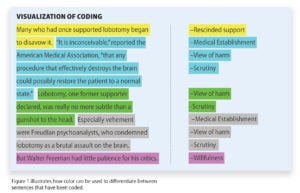
What Is a Focus Group?
Reviewed by Olivia Guy-Evans, MSc
Cross-Cultural Research Methodology In Psychology
What is internal validity in research.
Reviewed by Saul Mcleod, PhD
Scientific Method
Qualitative research, experiments.
The scientific method is a step-by-step process used by researchers and scientists to determine if there is a relationship between two or more variables. Psychologists use this method to conduct psychological research, gather data, process information, and describe behaviors.
Learn More: Steps of the Scientific Method
Variables apply to experimental investigations. The independent variable is the variable the experimenter manipulates or changes. The dependent variable is the variable being tested and measured in an experiment, and is 'dependent' on the independent variable.
Learn More: Independent and Dependent Variables
When you perform a statistical test a p-value helps you determine the significance of your results in relation to the null hypothesis. A p-value less than 0.05 (typically ≤ 0.05) is statistically significant.
Learn More: P-Value and Statistical Significance
Qualitative research is a process used for the systematic collection, analysis, and interpretation of non-numerical data. Qualitative research can be used to gain a deep contextual understanding of the subjective social reality of individuals.
The experimental method involves the manipulation of variables to establish cause-and-effect relationships. The key features are controlled methods and the random allocation of participants into controlled and experimental groups.
Learn More: How the Experimental Method Works in Psychology
Frequent Asked Questions
What does p-value of 0.05 mean?
A p-value less than 0.05 (typically ≤ 0.05) is statistically significant. It indicates strong evidence against the null hypothesis, as there is less than a 5% probability the results have occurred by random chance rather than a real effect. Therefore, we reject the null hypothesis and accept the alternative hypothesis.
However, it is important to note that the p-value is not the only factor that should be considered when interpreting the results of a hypothesis test. Other factors, such as effect size, should also be considered.
Learn More: What A p-Value Tells You About Statistical Significance
What does z-score tell you?
A z-score describes the position of a raw score in terms of its distance from the mean when measured in standard deviation units. It is also known as a standard score because it allows the comparison of scores on different variables by standardizing the distribution. The z-score is positive if the value lies above the mean and negative if it lies below the mean.
Learn More: Z-Score: Definition, Calculation, Formula, & Interpretation
What is an independent vs dependent variable?
The independent variable is the variable the experimenter manipulates or changes and is assumed to have a direct effect on the dependent variable. For example, allocating participants to either drug or placebo conditions (independent variable) to measure any changes in the intensity of their anxiety (dependent variable).
Learn More : What are Independent and Dependent Variables?
What is the difference between qualitative and quantitative?
Quantitative data is numerical information about quantities and qualitative data is descriptive and regards phenomena that can be observed but not measured, such as language.
Learn More: What’s the difference between qualitative and quantitative research?
Explore Research Methodology

What Is Face Validity In Research? Importance & How To Measure

Criterion Validity: Definition & Examples
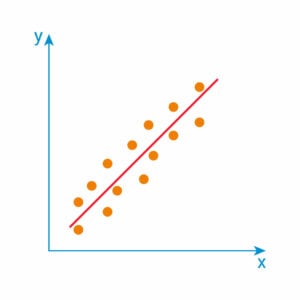
Convergent Validity: Definition and Examples

Content Validity in Research: Definition & Examples

Construct Validity In Psychology Research

Concurrent Validity In Psychology

Internal vs. External Validity In Psychology

Qualitative Research: Characteristics, Design, Methods & Examples

Demand Characteristics In Psychology: Definition, Examples & Control
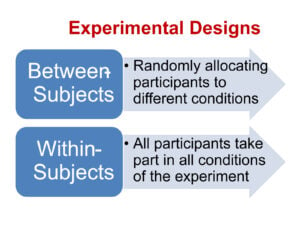
Between-Subjects vs. Within-Subjects Study Design

Random Assignment in Psychology: Definition & Examples

Double-Blind Experimental Study And Procedure Explained

Observer Bias: Definition, Examples & Prevention
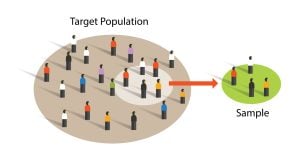
Sampling Bias: Types, Examples & How to Avoid It
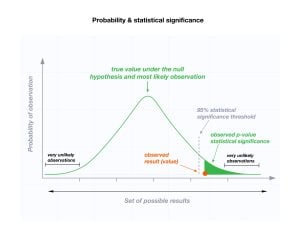
What is The Null Hypothesis & When Do You Reject The Null Hypothesis
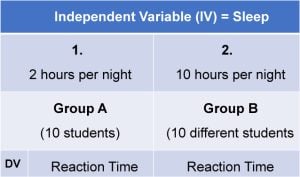
Between-Subjects Design: Overview & Examples
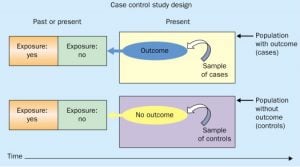
What Is A Case Control Study?

Case Study Research Method in Psychology
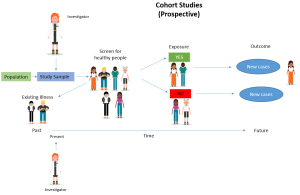
Cohort Study: Definition, Designs & Examples
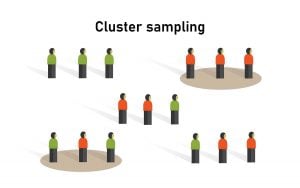
Cluster Sampling: Definition, Method and Examples
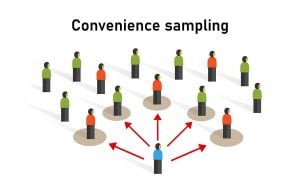
Convenience Sampling: Definition, Method and Examples
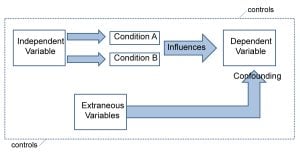
Confounding Variables in Psychology: Definition & Examples
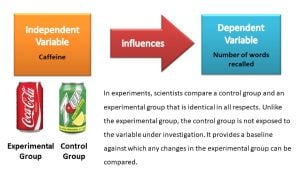
Control Group vs Experimental Group
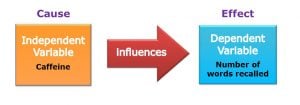
Controlled Experiment
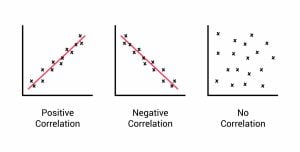
Correlation in Psychology: Meaning, Types, Examples & coefficient

Extraneous Variables In Research: Types & Examples

Ethnocentrism In Psychology: Examples, Disadvantages, & Cultural Relativism

Ethical Considerations In Psychology Research

IMAGES
VIDEO
COMMENTS
Types of Data Analysis in Qualitative Research. Qualitative research employs different data analysis methods, each suited to specific research goals: Thematic Analysis: Identifies recurring themes or concepts within data. Content Analysis: Systematically categorizes and quantifies text or media content.
Qualitative research methods. Each of the research approaches involve using one or more data collection methods.These are some of the most common qualitative methods: Observations: recording what you have seen, heard, or encountered in detailed field notes. Interviews: personally asking people questions in one-on-one conversations. Focus groups: asking questions and generating discussion among ...
Qualitative Research. Qualitative research is a type of research methodology that focuses on exploring and understanding people's beliefs, attitudes, behaviors, and experiences through the collection and analysis of non-numerical data. It seeks to answer research questions through the examination of subjective data, such as interviews, focus ...
Types of qualitative research methods with examples. Qualitative research methods are designed in a manner that helps reveal the behavior and perception of a target audience with reference to a particular topic. There are different types of qualitative research methods, such as in-depth interviews, focus groups, ethnographic research, content ...
Qualitative research is defined as an exploratory method that aims to understand complex phenomena, often within their natural settings, by examining subjective experiences, beliefs, attitudes, and behaviors. Learn more about qualitative research methods, types, examples and best practices.
Types of qualitative research 3,4. The data collection methods in qualitative research are designed to assess and understand the perceptions, motivations, and feelings of the respondents about the subject being studied. The different qualitative research types include the following: . In-depth or one-on-one interviews: This is one of the most common qualitative research methods and helps the ...
Abstract. This paper aims to provide an overview of the use and assessment of qualitative research methods in the health sciences. Qualitative research can be defined as the study of the nature of phenomena and is especially appropriate for answering questions of why something is (not) observed, assessing complex multi-component interventions ...
Qualitative research: methods and examples. Qualitative research is an excellent way to gain insight into real-world problems. This research type can explain various aspects of individuals in a target group, such as their traits, behaviors, and motivations. Qualitative research involves gathering and evaluating non-numerical information to ...
Qualitative research is a type of research that explores and provides deeper insights into real-world problems.[1] Instead of collecting numerical data points or intervening or introducing treatments just like in quantitative research, qualitative research helps generate hypothenar to further investigate and understand quantitative data. Qualitative research gathers participants' experiences ...
Qualitative research is a method of inquiry used in various disciplines, including social sciences, education, and health, to explore and understand human behavior, experiences, and social phenomena. It focuses on collecting non-numerical data, such as words, images, or objects, to gain in-depth insights into people's thoughts, feelings, motivations, and perspectives.
Qualitative research seeks to gain insights and understand people's experiences and perspectives by studying social organizations and human behavior. Data in qualitative studies focuses on people's beliefs and emotional responses. Qualitative data is especially helpful when a company wants to know how customers feel about a product or ...
There are various types of qualitative data that can be collected and analyzed, including: Interviews: These involve in-depth, face-to-face conversations with individuals or groups to gather their perspectives, experiences, and opinions on a particular topic. Focus Groups: These are group discussions where a facilitator leads a discussion on a ...
QDA Method #1: Qualitative Content Analysis. Content analysis is possibly the most common and straightforward QDA method. At the simplest level, content analysis is used to evaluate patterns within a piece of content (for example, words, phrases or images) or across multiple pieces of content or sources of communication. For example, a collection of newspaper articles or political speeches.
Qualitative research methods are designed to understand the behavior and perception of the target audience about a particular subject. Qualitative research methods include observations, one-on-one interviews, case study research, focus groups, ethnographic research, phenomenology, and grounded theory. Let's discuss them one by one.
While many books and articles guide various qualitative research methods and analyses, there is currently no concise resource that explains and differentiates among the most common qualitative approaches. We believe novice qualitative researchers, students planning the design of a qualitative study or taking an introductory qualitative research course, and faculty teaching such courses can ...
Qualitative research methods often contrast with quantitative research methods, which are usually found in the hard sciences such as biology and chemistry. Both orientations are used in the social sciences and behavioral sciences methodology as they contribute to the empirical understanding of scientific knowledge.
Research methods are specific procedures for collecting and analyzing data. Developing your research methods is an integral part of your research design. When planning your methods, there are two key decisions you will make. First, decide how you will collect data. Your methods depend on what type of data you need to answer your research question:
Qualitative research methods. Each of the research approaches involve using one or more data collection methods.These are some of the most common qualitative methods: Observations: recording what you have seen, heard, or encountered in detailed field notes. Interviews: personally asking people questions in one-on-one conversations. Focus groups: asking questions and generating discussion among ...
Significance of Qualitative Research. The qualitative method of inquiry examines the 'how' and 'why' of decision making, rather than the 'when,' 'what,' and 'where.'[] Unlike quantitative methods, the objective of qualitative inquiry is to explore, narrate, and explain the phenomena and make sense of the complex reality.Health interventions, explanatory health models, and medical-social ...
It's one of the most critical aspects of qualitative research, turning raw, unstructured data into valuable insights. Qualitative data analysis usually takes place with several steps, such as: Organizing and preparing the data for analysis. Reading through the data. Coding the data. Generating themes or categories.
Ethnography. Ethnography is the descriptive study of people and their culture. The ethnographic model is one of the major types of qualitative research methods used in social sciences, especially in anthropology. This method of research aims to study individuals in their own habitat through the usage of methods like observations, interviews etc.
Quantitative research focuses on collecting numerical data that can be used to quantify the magnitude of a situation. The data gained can be organized and statistical analysis carried out. For example, qualitative research may tell you that people in lower-income areas drop out of school and have lower literacy rates.
This type of research can be used to establish generalizable facts. about a topic. Common quantitative methods include experiments, observations recorded as numbers, and surveys with closed-ended questions. ... Methods & Examples Qualitative research involves collecting and analyzing non-numerical data to understand concepts, opinions or ...
11. Action research. Action research is a participatory method where researchers work alongside participants to identify and solve problems or improve practices. In the context of market research, it could involve collaborating with consumers to co-create solutions or enhance product design. Benefits:
Introduction. A research design in qualitative research is a critical framework that guides the methodological approach to studying complex social phenomena. Qualitative research designs determine how data is collected, analyzed, and interpreted, ensuring that the research captures participants' nuanced and subjective perspectives.
Methodology refers to the overarching strategy and rationale of your research. Developing your methodology involves studying the research methods used in your field and the theories or principles that underpin them, in order to choose the approach that best matches your research objectives. Methodology is the first step in planning a research project.